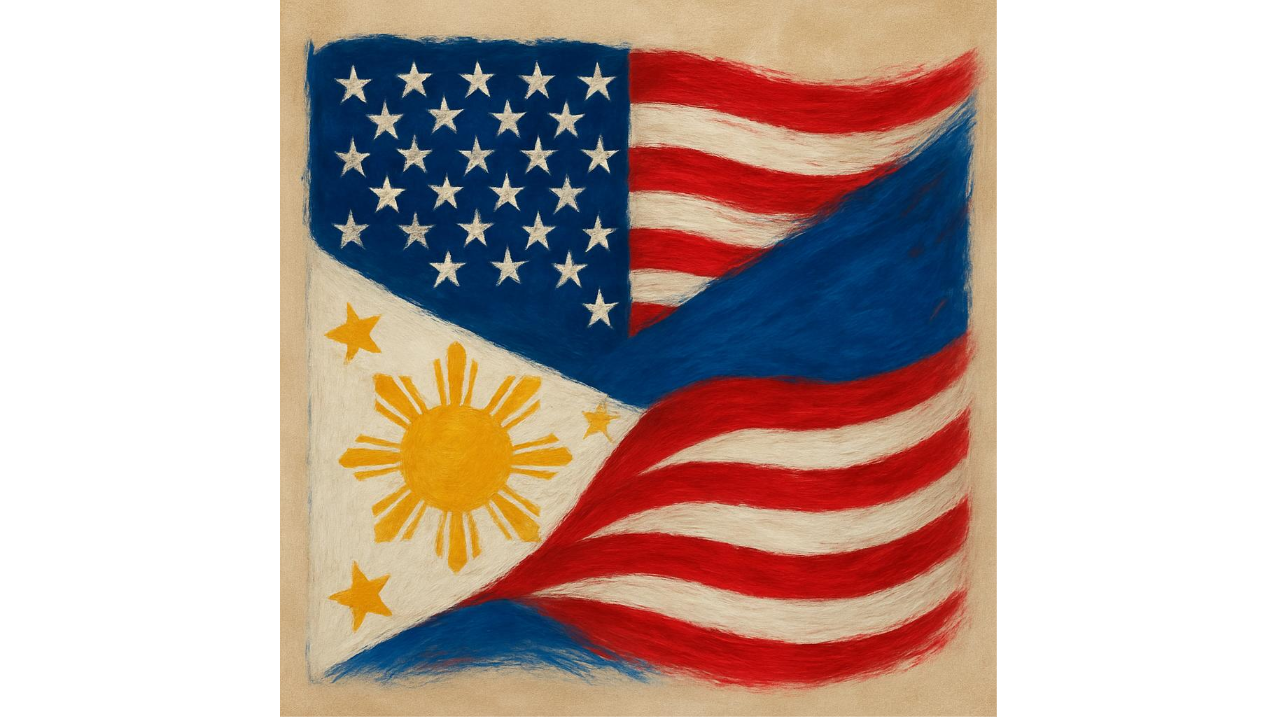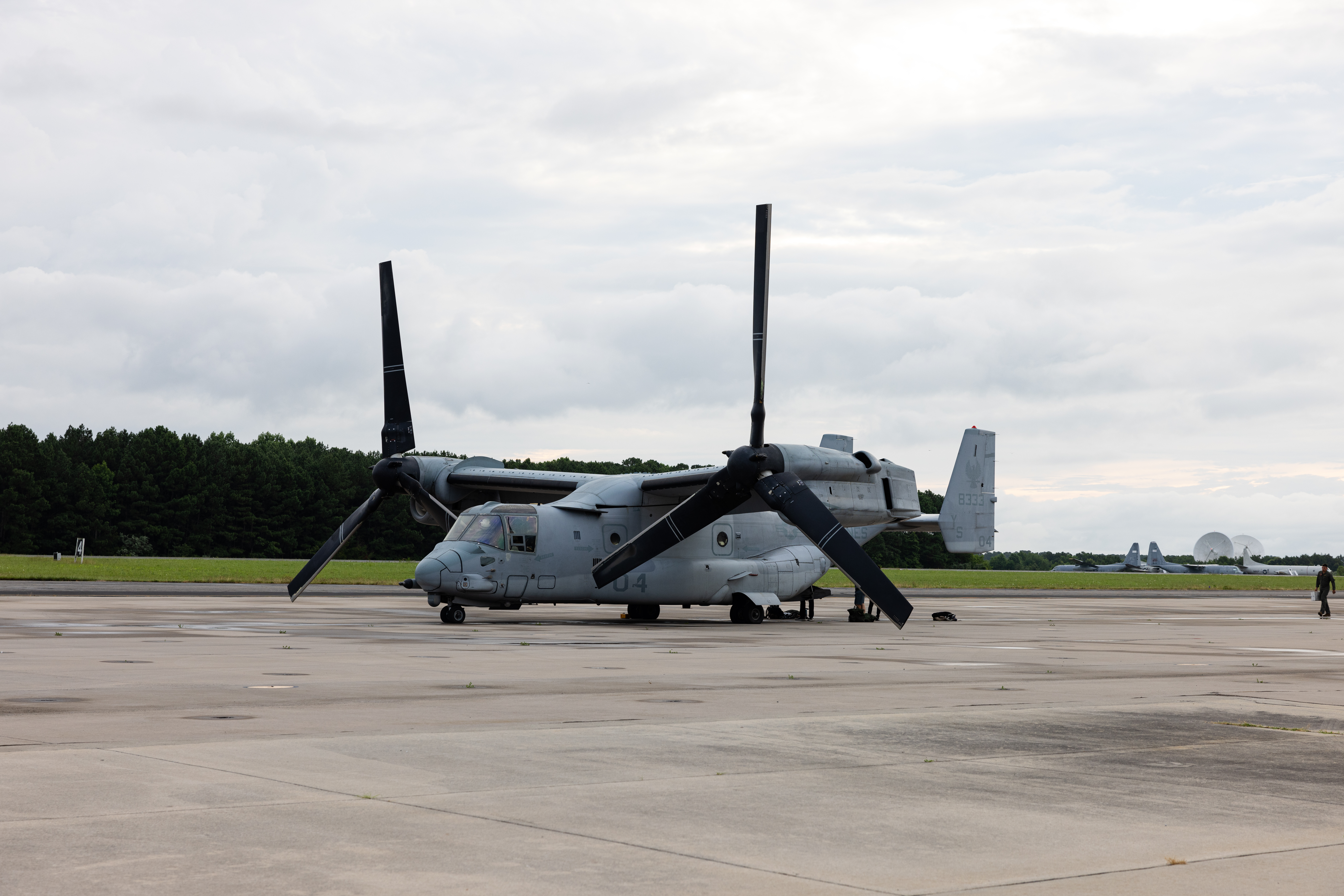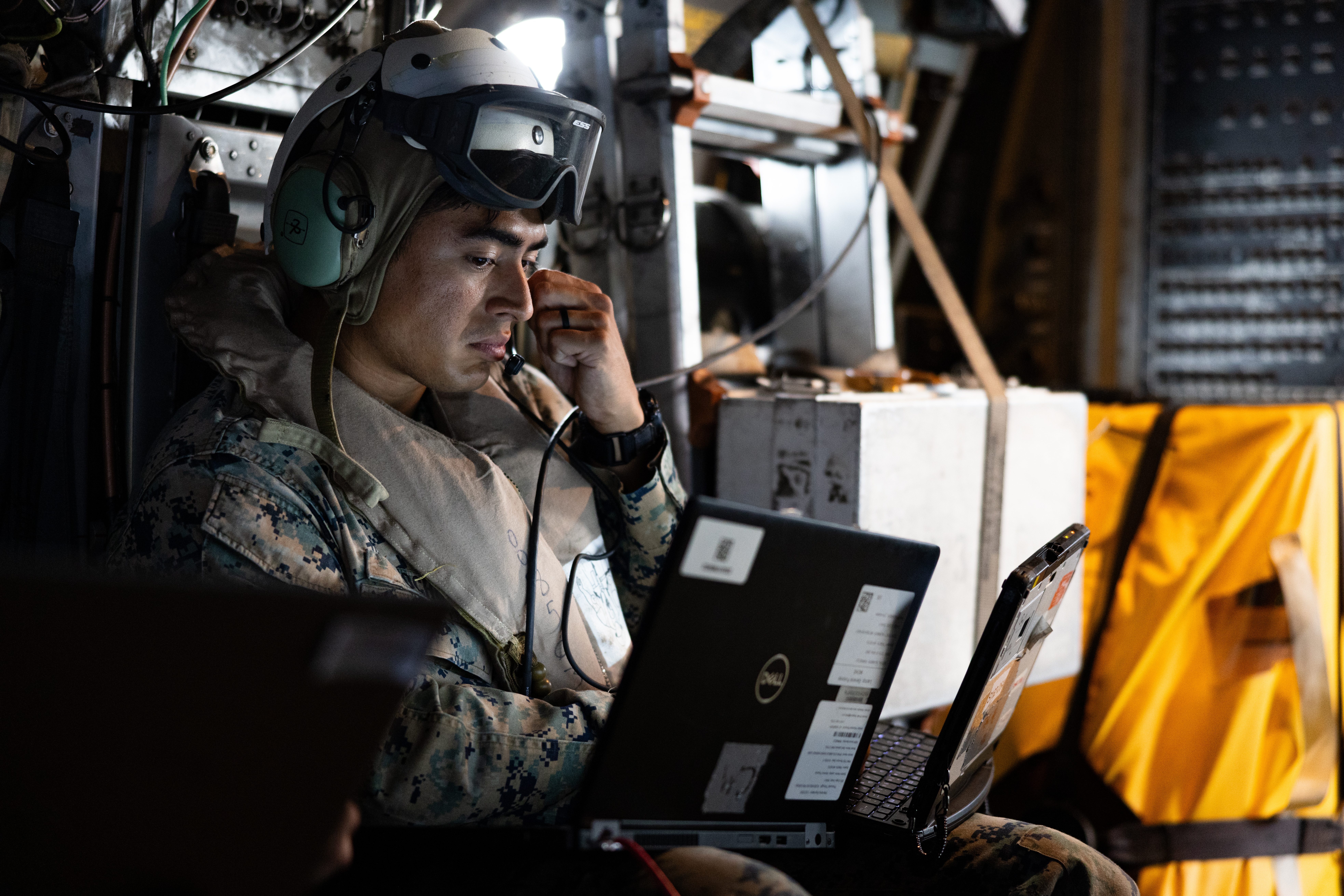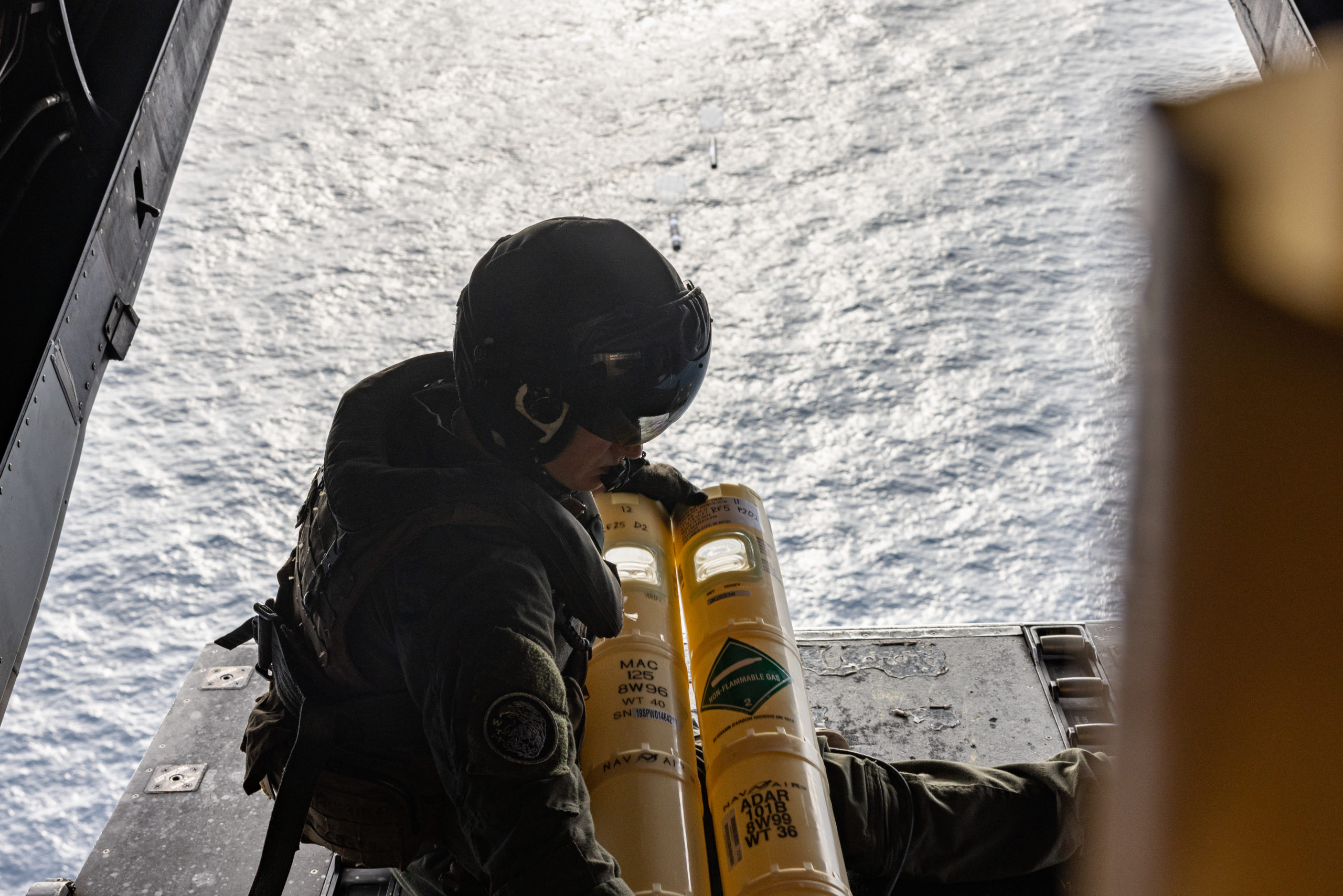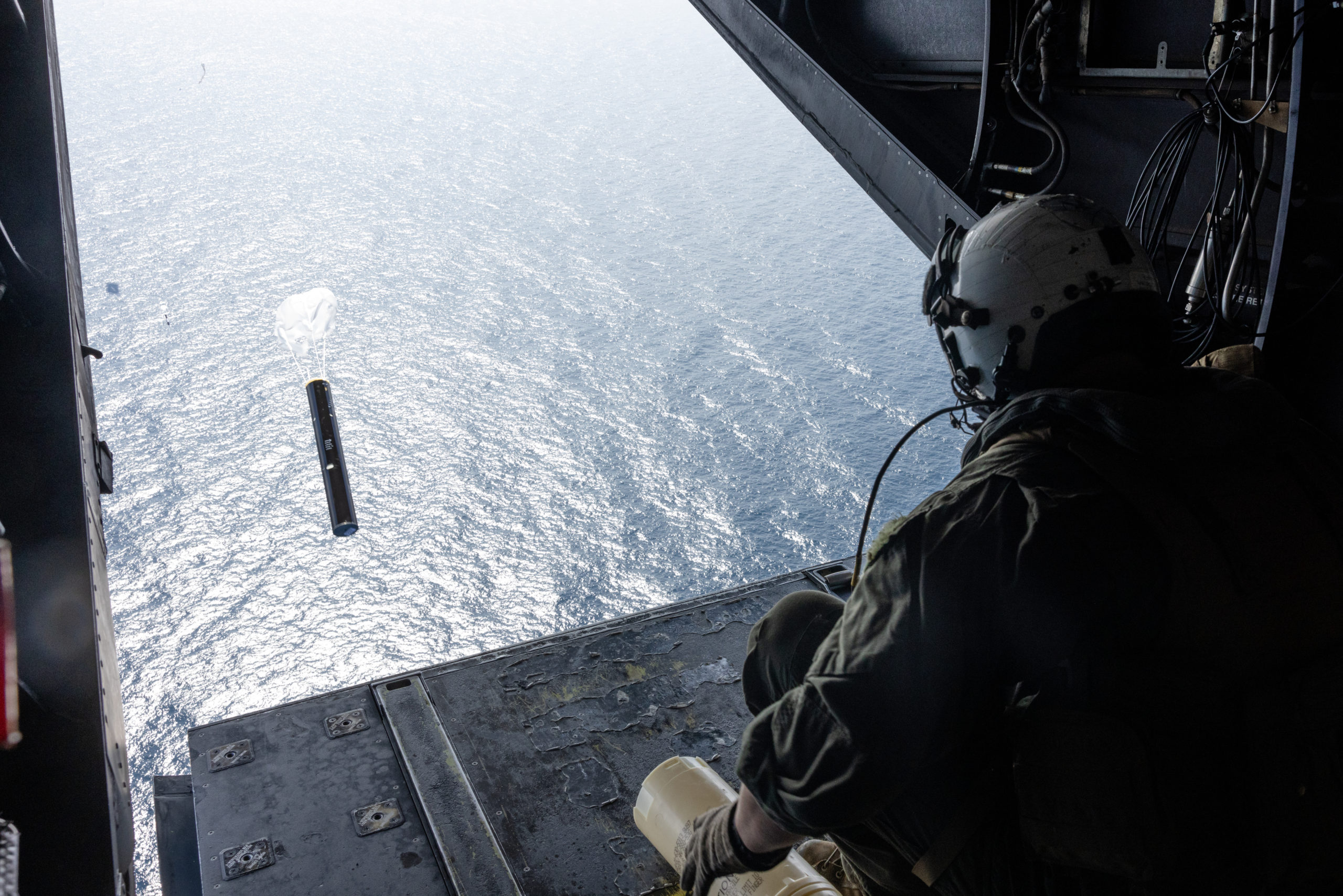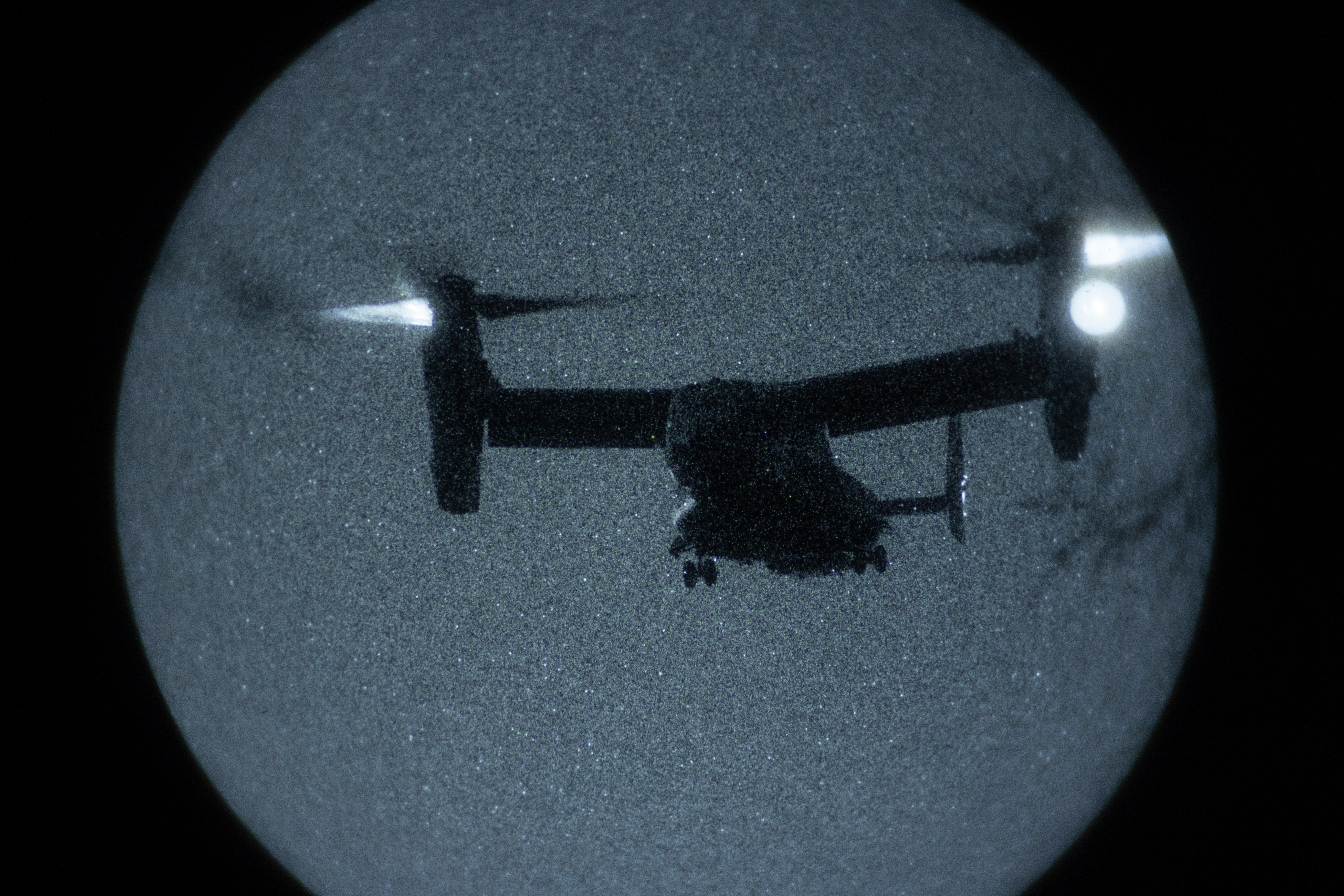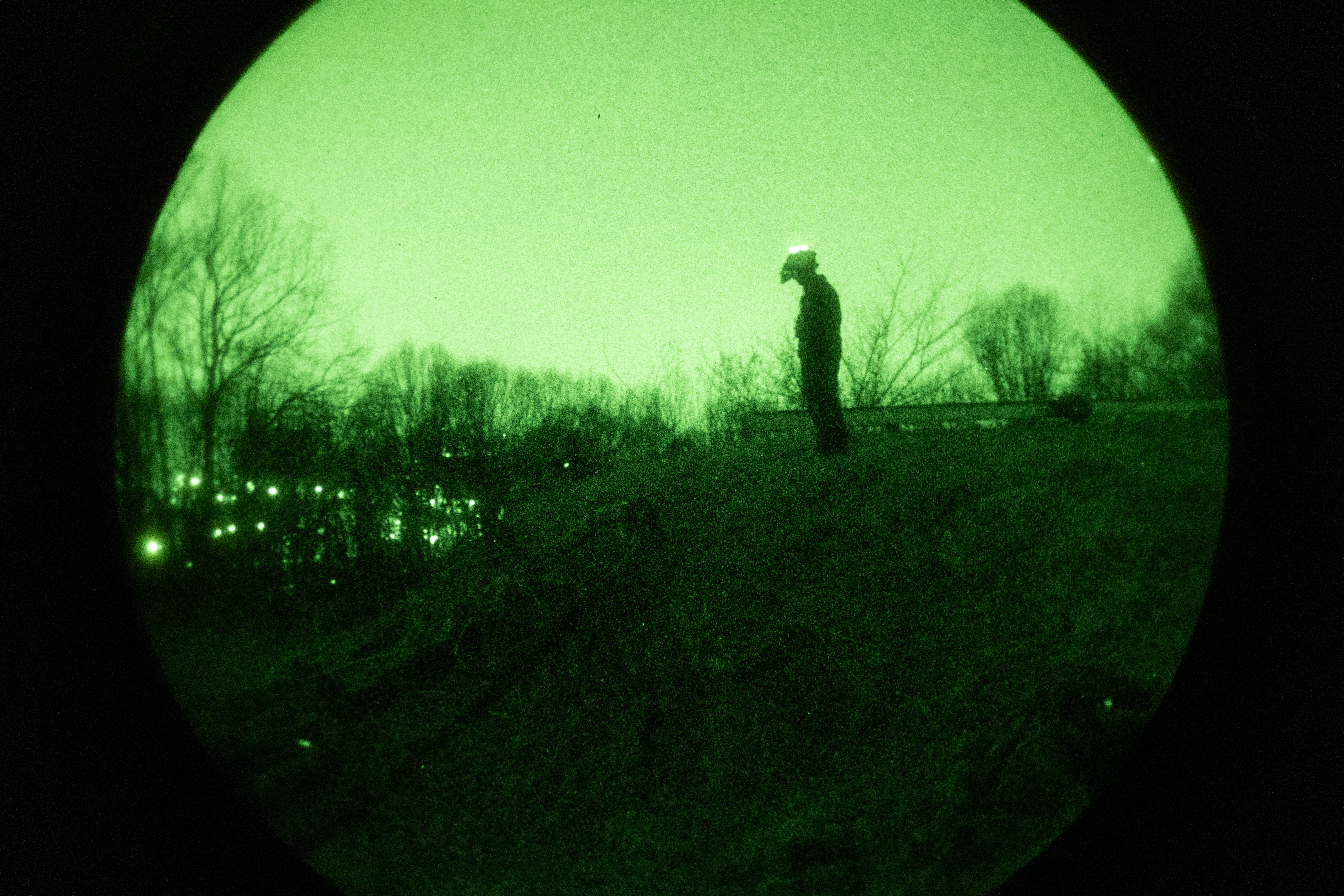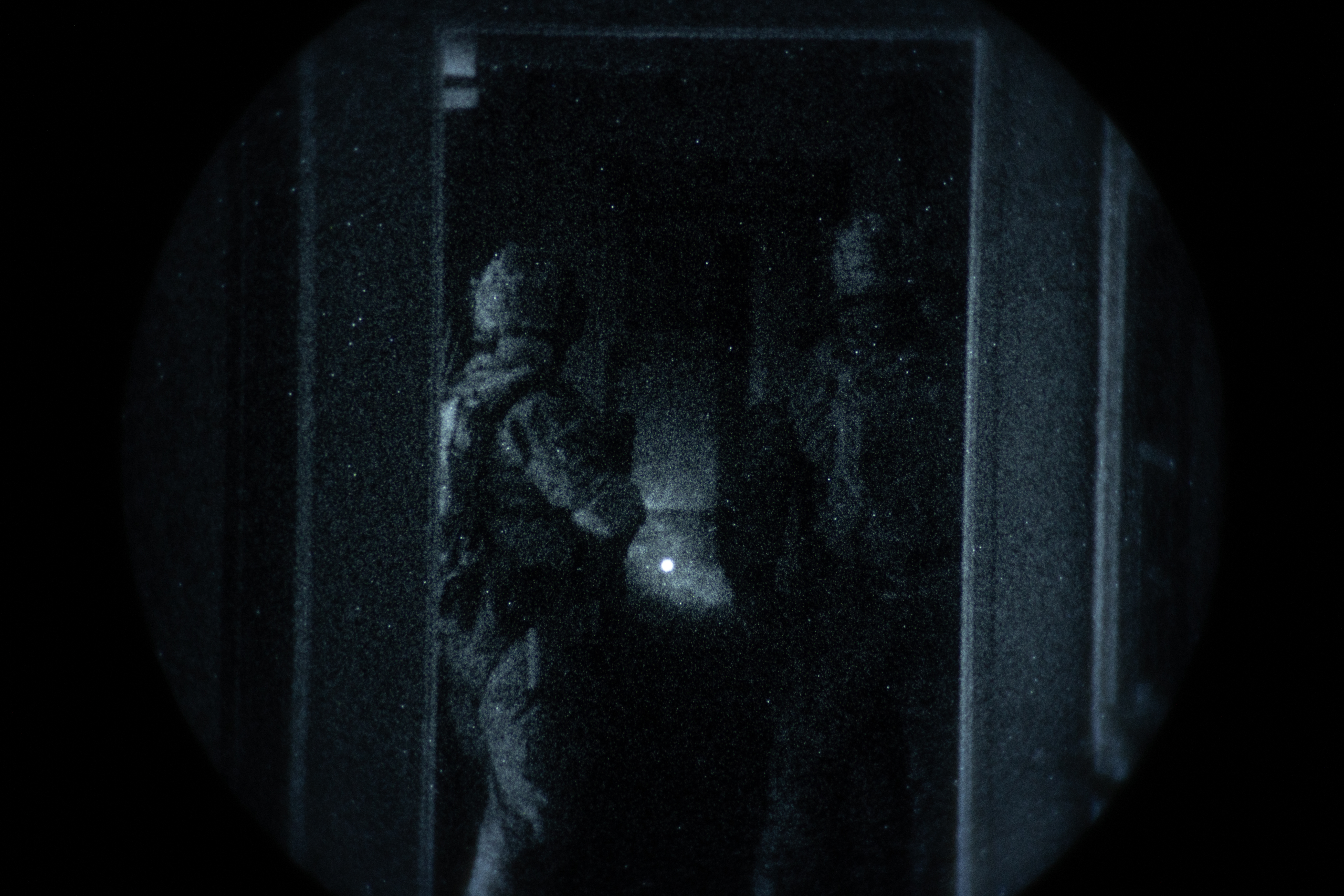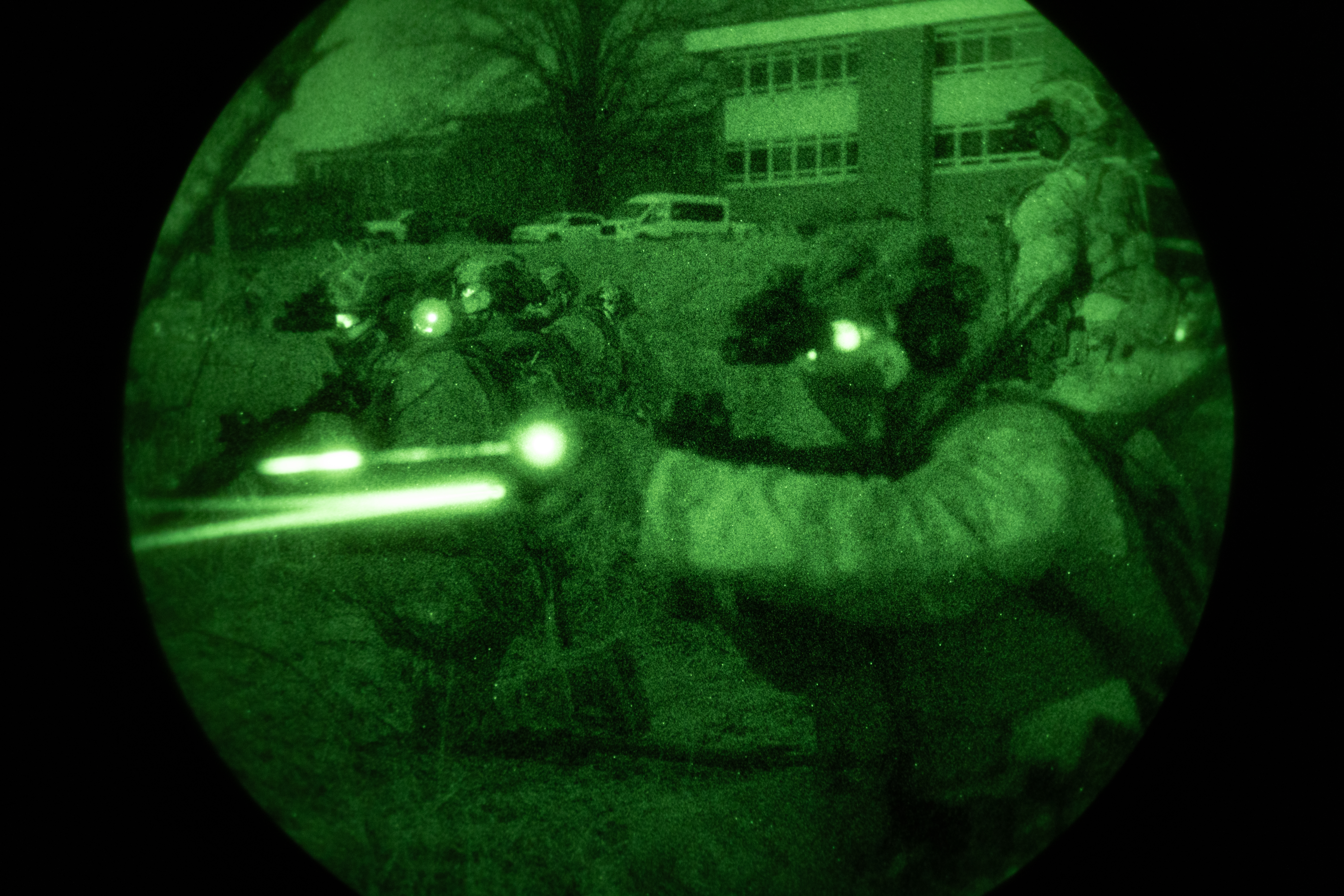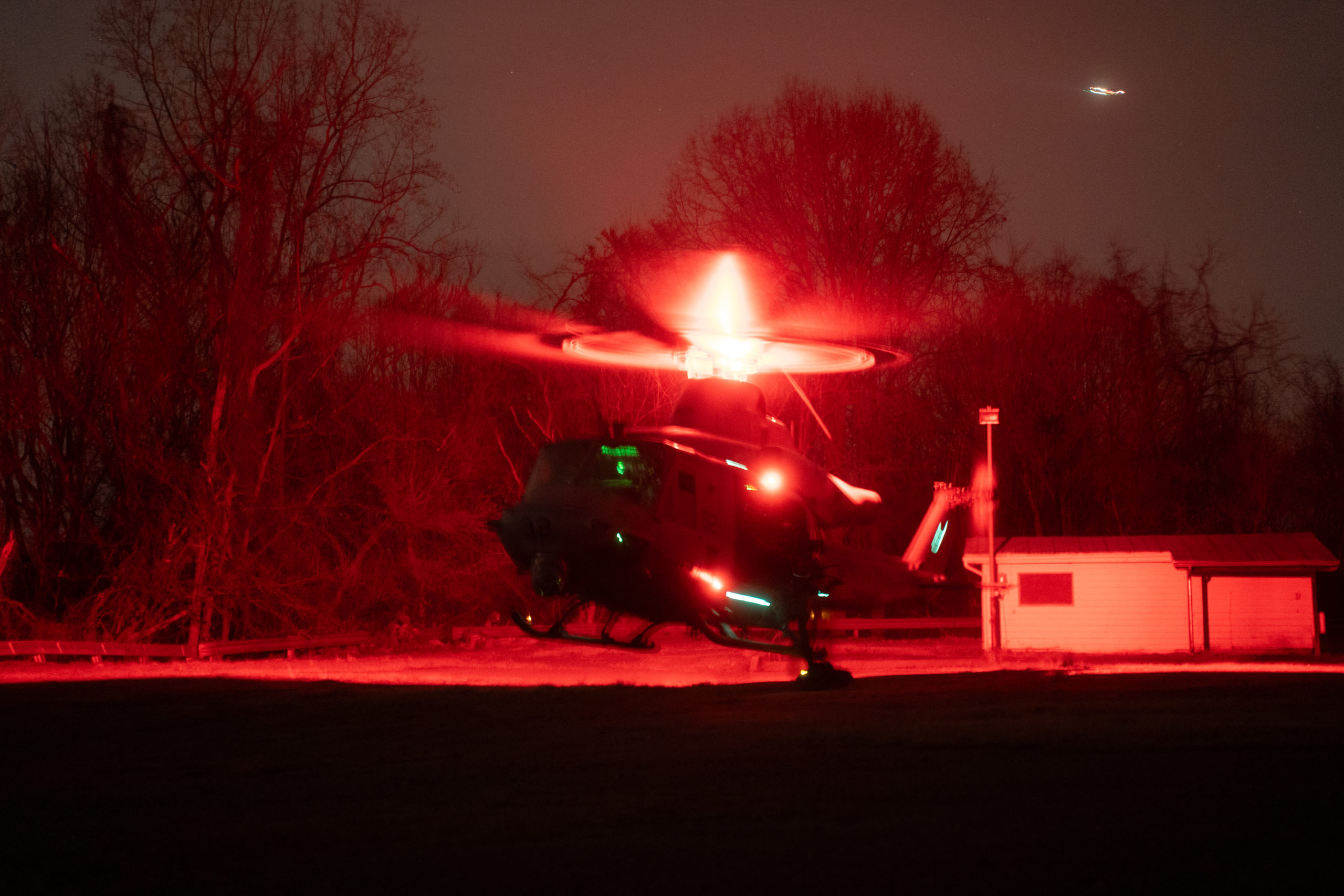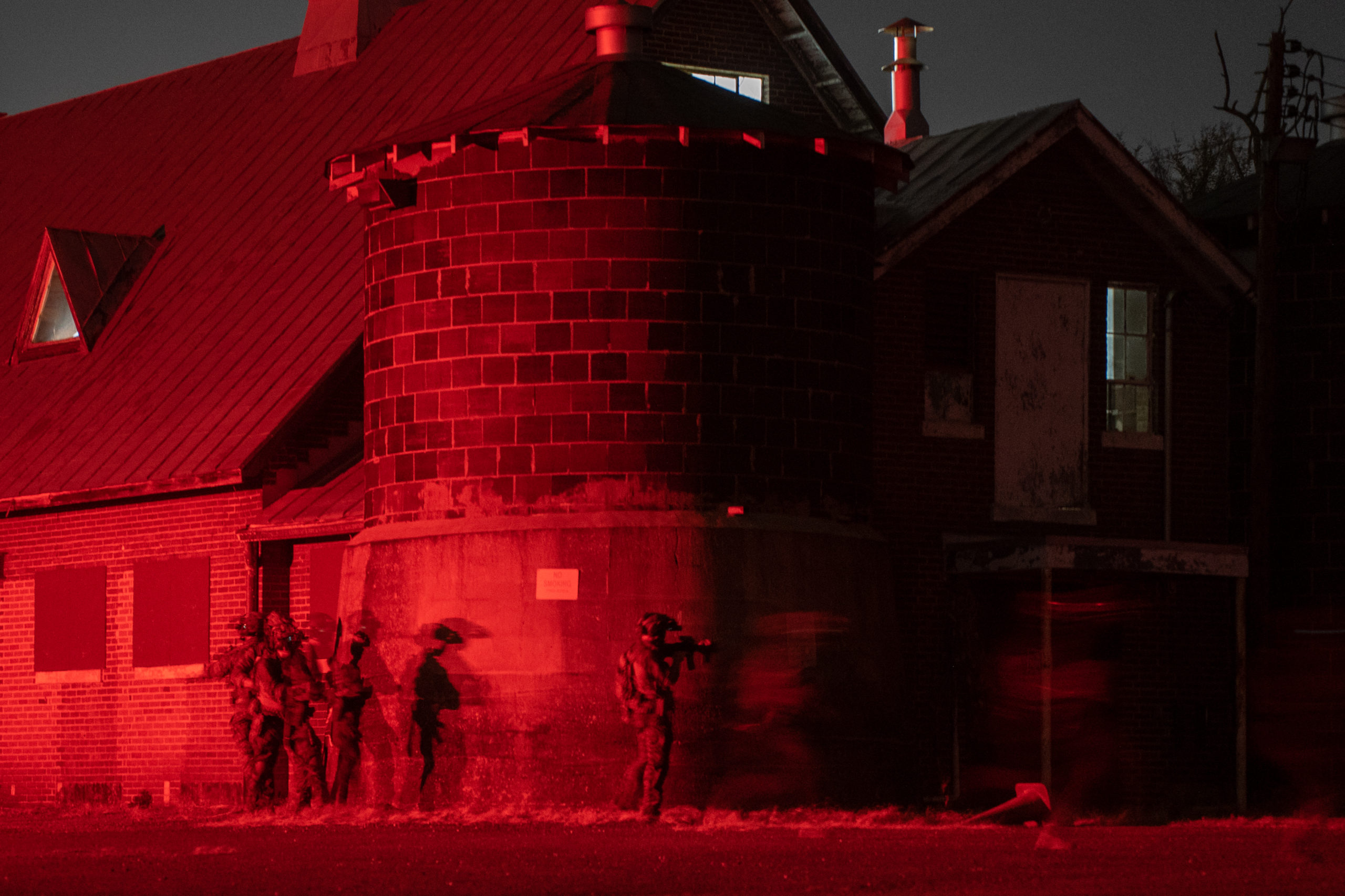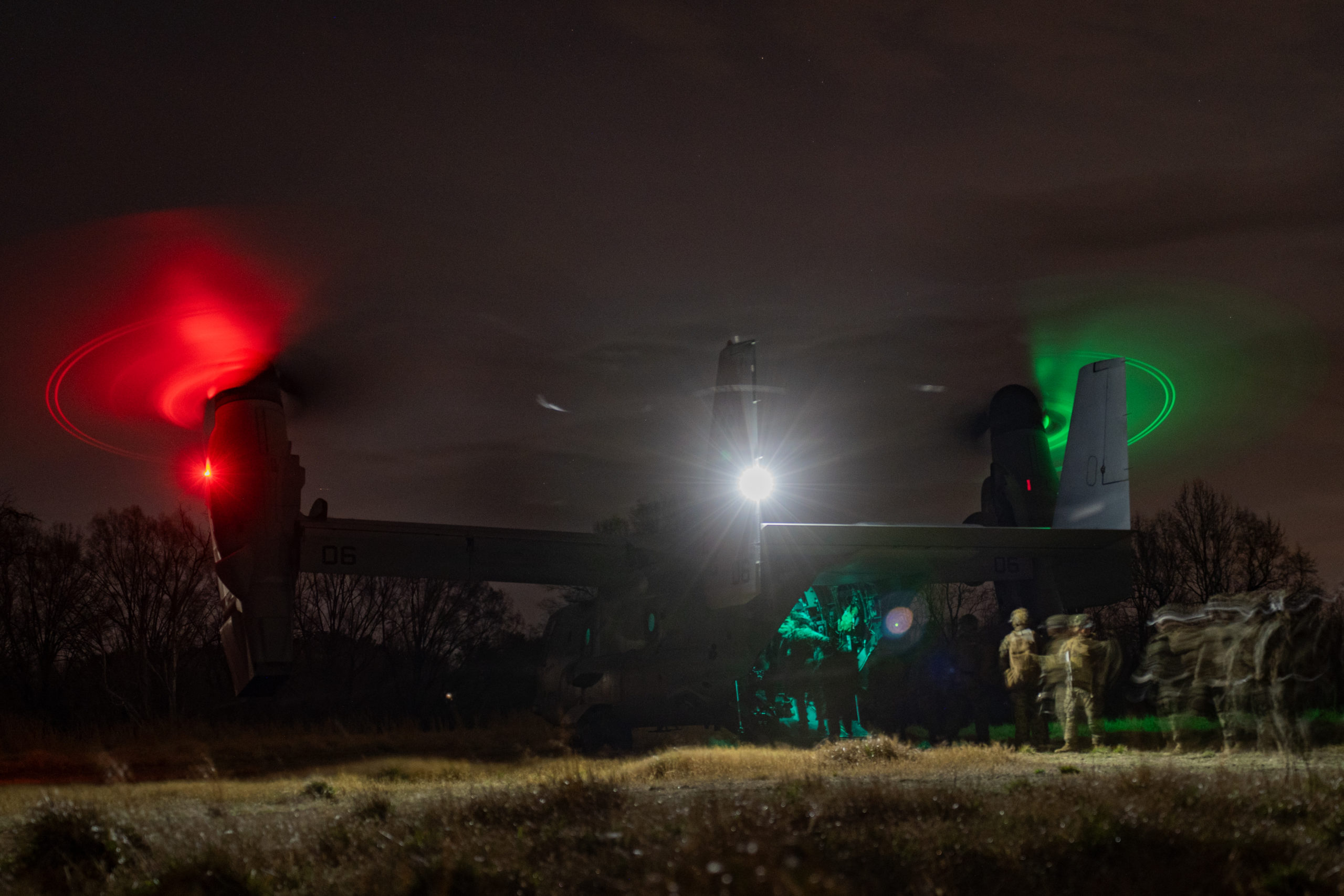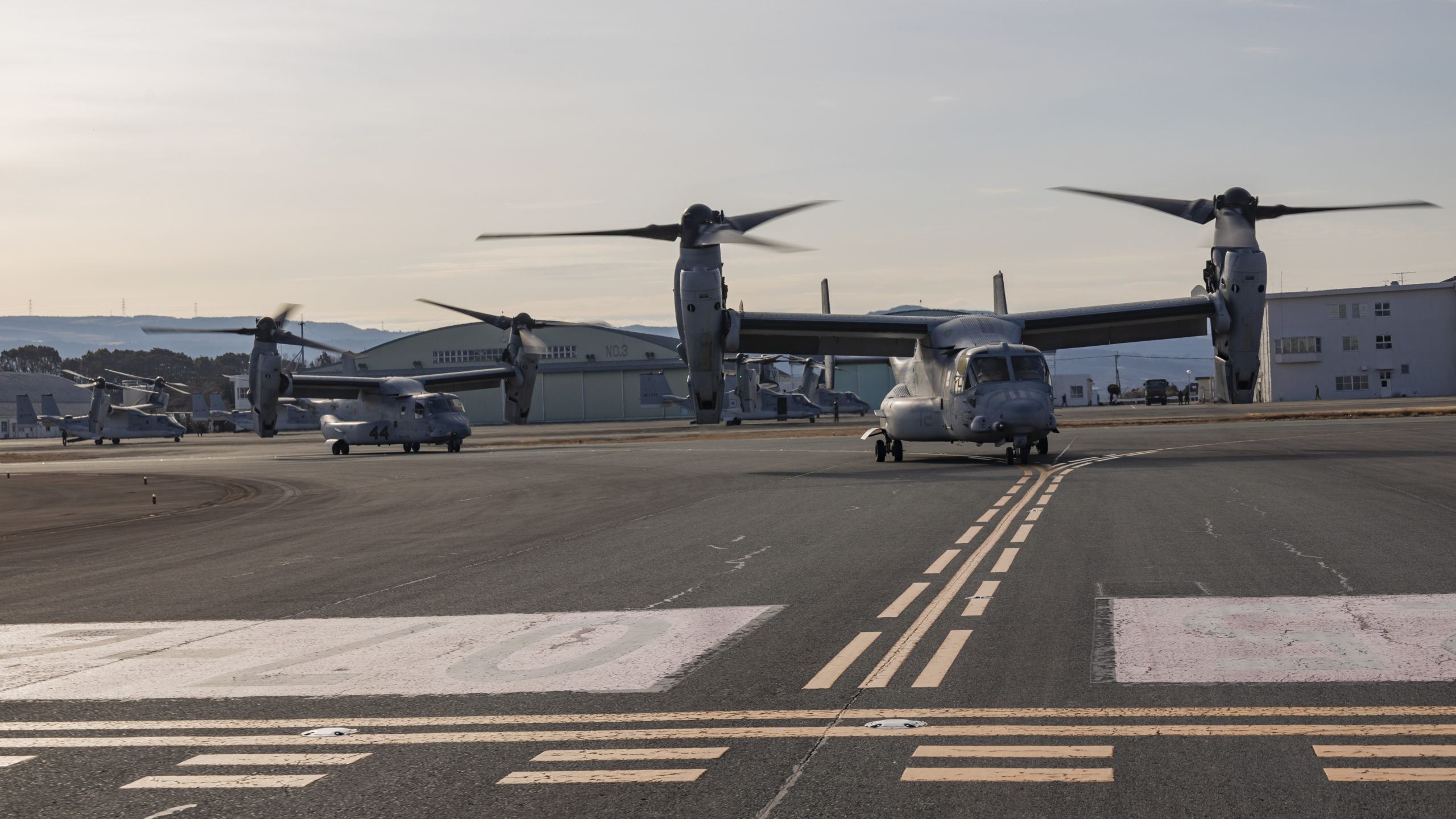
U.S. Marines with Marine Medium Tiltrotor Squadron (VMM) 262 (Rein.), 31st Marine Expeditionary Unit, taxi the runway in U.S. Marine Corps MV-22B Ospreys assigned to VMM-262 (Rein.), during a bilateral insert exercise in support of Iron Fist 25, at Japan Ground Self-Defense Force Vice-Camp Takayubaru, Kumamoto, Japan, Feb. 23, 2025. Iron Fist is an annual bilateral exercise designed to increase interoperability and strengthen the relationships between the U.S. Marine Corps, U.S. Navy and Japan Ground Self-Defense Force. The 31st MEU, the Marine Corps’ only continuously forward deployed MEU, provides a flexible and lethal force, ready to perform a wide range of military operations as the premiere crisis response force in the Indo-Pacific region. (U.S. Marine Corps photo by Sgt. Tyler Andrews)

U.S. Marines with Marine Medium Tiltrotor Squadron (VMM) 262 (Rein.), 31st Marine Expeditionary Unit, takeoff in U.S. Marine Corps MV-22B Ospreys assigned to VMM-262 (Rein.), during a bilateral insert exercise in support of Iron Fist 25, at Japan Ground Self-Defense Force Vice-Camp Takayubaru, Kumamoto, Japan, Feb. 23, 2025. Iron Fist is an annual bilateral exercise designed to increase interoperability and strengthen the relationships between the U.S. Marine Corps, U.S. Navy and Japan Ground Self-Defense Force. The 31st MEU, the Marine Corps’ only continuously forward deployed MEU, provides a flexible and lethal force, ready to perform a wide range of military operations as the premiere crisis response force in the Indo-Pacific region. (U.S. Marine Corps photo by Sgt. Tyler Andrews)
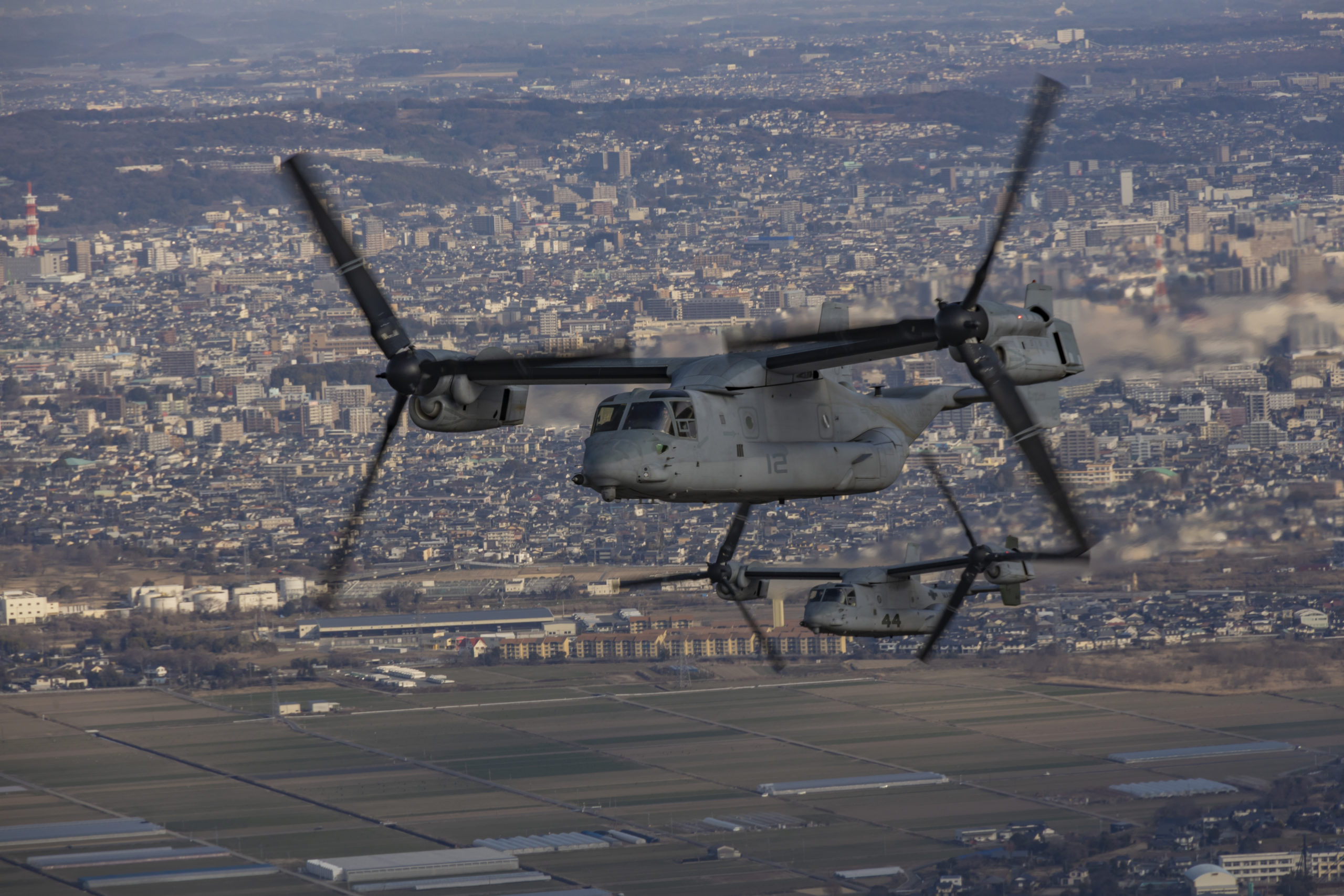
U.S. Marines with Marine Medium Tiltrotor Squadron (VMM) 262 (Rein.), 31st Marine Expeditionary Unit, transport in U.S. Marine Corps MV-22B Ospreys assigned to VMM-262 (Rein.), during a bilateral insert exercise in support of Iron Fist 25, above Kumamoto, Japan, Feb. 23, 2025. Iron Fist is an annual bilateral exercise designed to increase interoperability and strengthen the relationships between the U.S. Marine Corps, U.S. Navy and Japan Ground Self-Defense Force. The 31st MEU, the Marine Corps’ only continuously forward deployed MEU, provides a flexible and lethal force, ready to perform a wide range of military operations as the premiere crisis response force in the Indo-Pacific region. (U.S. Marine Corps photo by Sgt. Tyler Andrews)
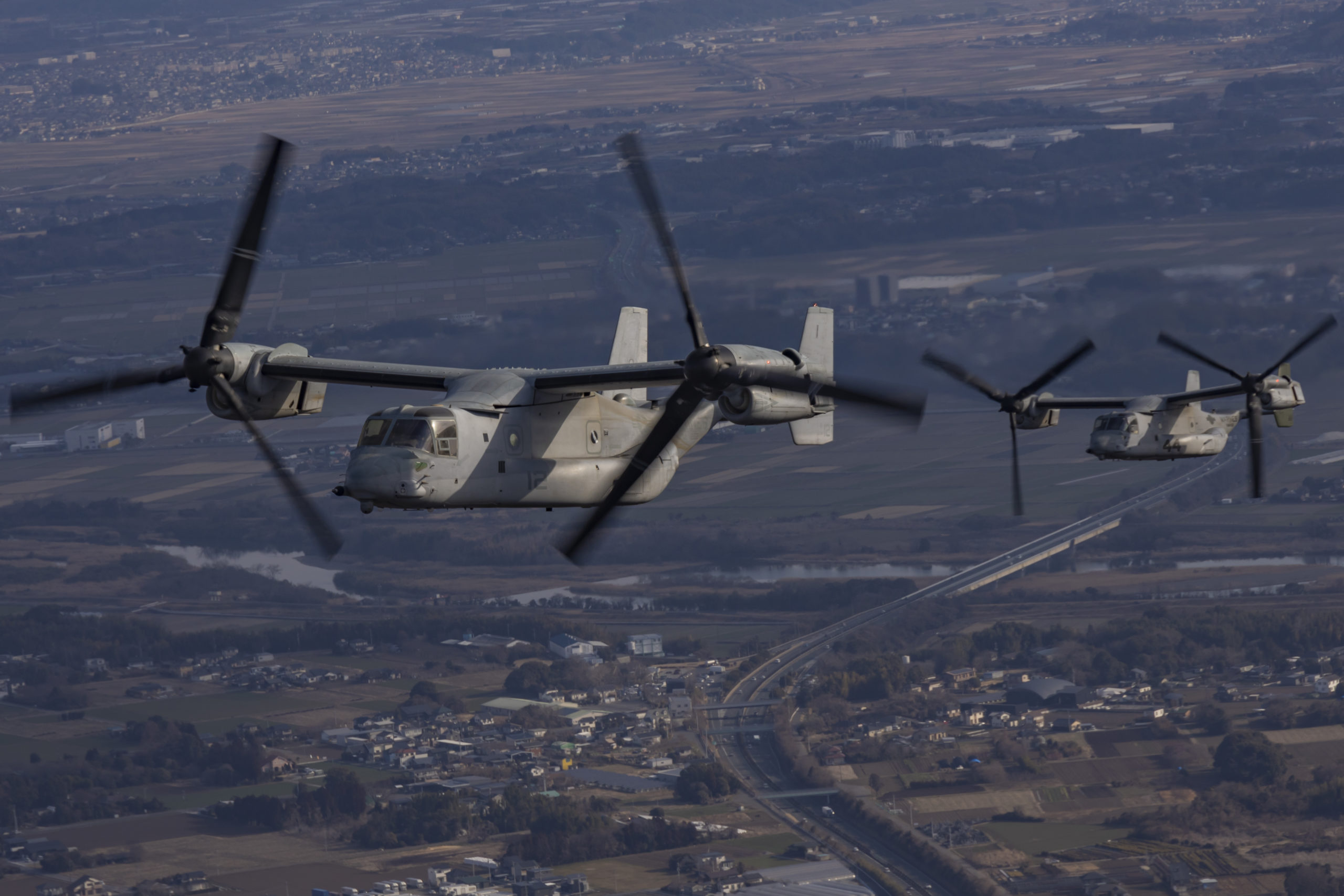
U.S. Marines with Marine Medium Tiltrotor Squadron (VMM) 262 (Rein.), 31st Marine Expeditionary Unit, transport in U.S. Marine Corps MV-22B Ospreys assigned to VMM-262 (Rein.), during a bilateral insert exercise in support of Iron Fist 25, above Kumamoto, Japan, Feb. 23, 2025. Iron Fist is an annual bilateral exercise designed to increase interoperability and strengthen the relationships between the U.S. Marine Corps, U.S. Navy and Japan Ground Self-Defense Force. The 31st MEU, the Marine Corps’ only continuously forward deployed MEU, provides a flexible and lethal force, ready to perform a wide range of military operations as the premiere crisis response force in the Indo-Pacific region. (U.S. Marine Corps photo by Sgt. Tyler Andrews)
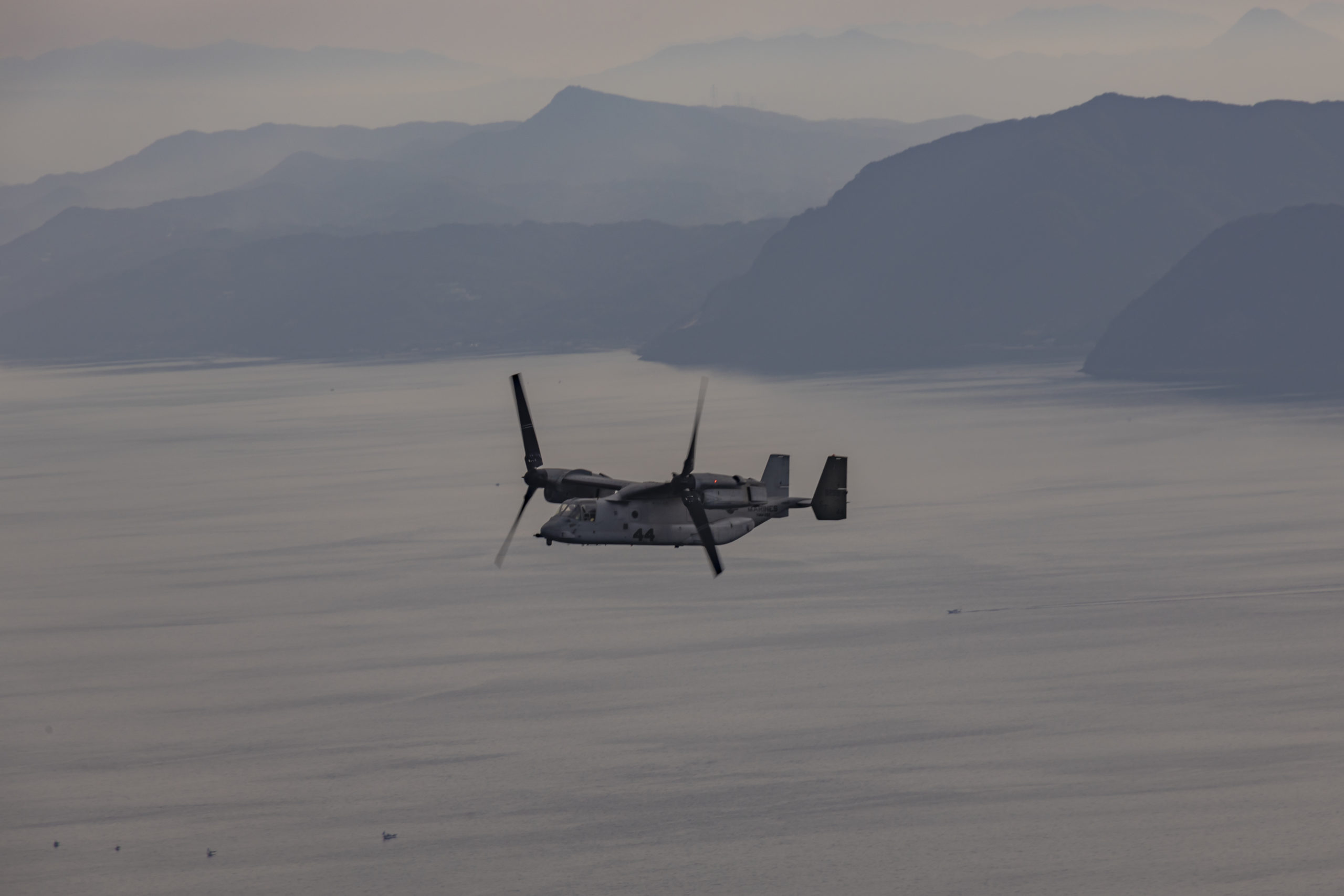
U.S. Marines with Marine Medium Tiltrotor Squadron (VMM) 262 (Rein.), 31st Marine Expeditionary Unit, transport in a U.S. Marine Corps MV-22B Osprey assigned to VMM-262 (Rein.), during a bilateral insert exercise in support of Iron Fist 25, off the coast of Japan, Feb. 23, 2025. Iron Fist is an annual bilateral exercise designed to increase interoperability and strengthen the relationships between the U.S. Marine Corps, U.S. Navy and Japan Ground Self-Defense Force. The 31st MEU, the Marine Corps’ only continuously forward deployed MEU, provides a flexible and lethal force, ready to perform a wide range of military operations as the premiere crisis response force in the Indo-Pacific region. (U.S. Marine Corps photo by Sgt. Tyler Andrews)
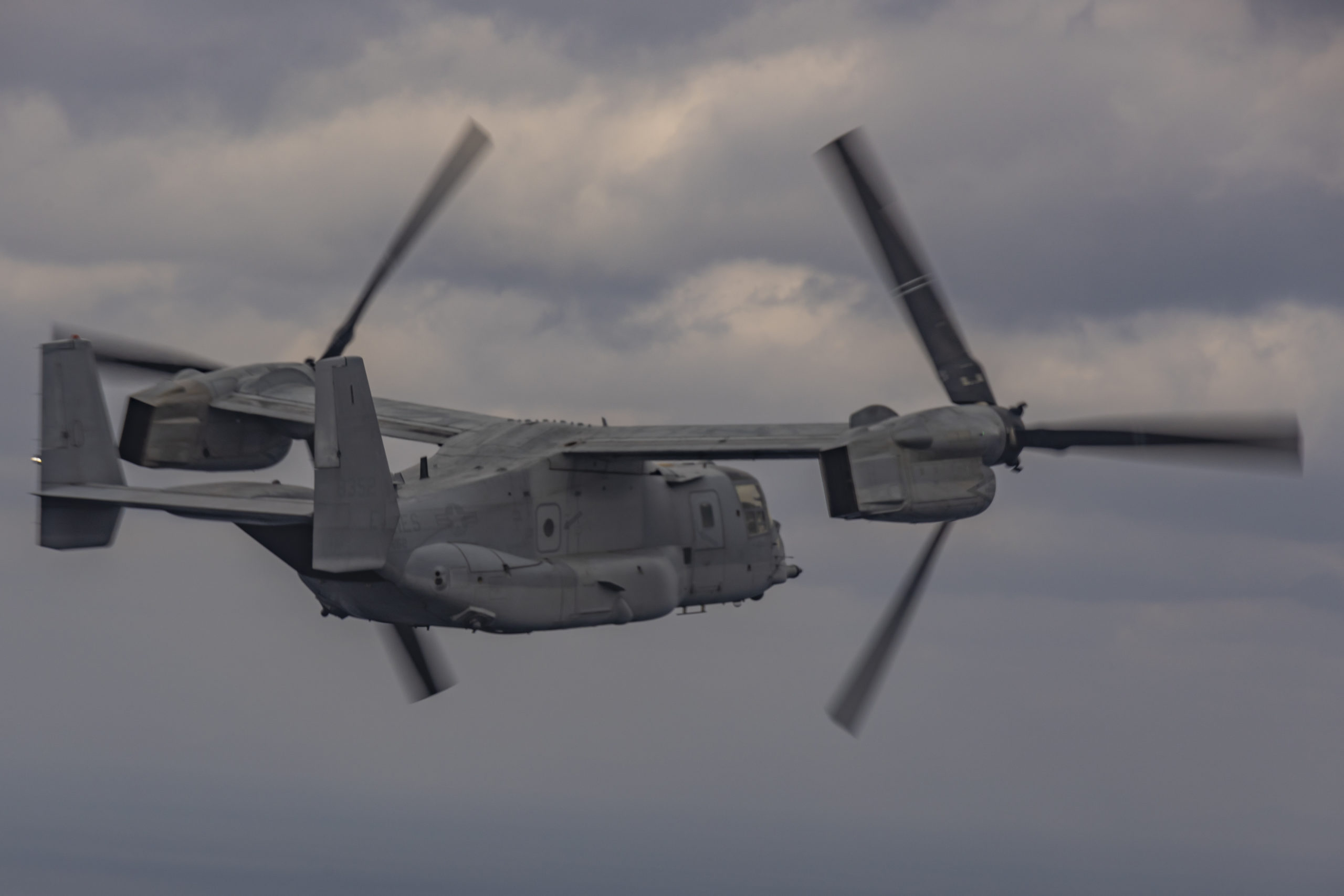
U.S. Marines with Marine Medium Tiltrotor Squadron (VMM) 262 (Rein.), 31st Marine Expeditionary Unit, transport in a U.S. Marine Corps MV-22B Osprey assigned to VMM-262 (Rein.), during a bilateral insert exercise in support of Iron Fist 25, off the coast of Japan, Feb. 23, 2025. Iron Fist is an annual bilateral exercise designed to increase interoperability and strengthen the relationships between the U.S. Marine Corps, U.S. Navy and Japan Ground Self-Defense Force. The 31st MEU, the Marine Corps’ only continuously forward deployed MEU, provides a flexible and lethal force, ready to perform a wide range of military operations as the premiere crisis response force in the Indo-Pacific region. (U.S. Marine Corps photo by Sgt. Tyler Andrews)

U.S. Marines with Marine Medium Tiltrotor Squadron (VMM) 262 (Rein.), 31st Marine Expeditionary Unit, stage U.S. Marine Corps MV-22B Ospreys assigned to VMM-262 (Rein.), during a bilateral insert exercise in support of Iron Fist 25, at Japan Ground Self-Defense Force Camp Ainoura, Sasebo, Nagasaki, Japan, Feb. 23, 2025. Iron Fist is an annual bilateral exercise designed to increase interoperability and strengthen the relationships between the U.S. Marine Corps, U.S. Navy and Japan Ground Self-Defense Force. The 31st MEU, the Marine Corps’ only continuously forward deployed MEU, provides a flexible and lethal force, ready to perform a wide range of military operations as the premiere crisis response force in the Indo-Pacific region. (U.S. Marine Corps photo by Sgt. Tyler Andrews)
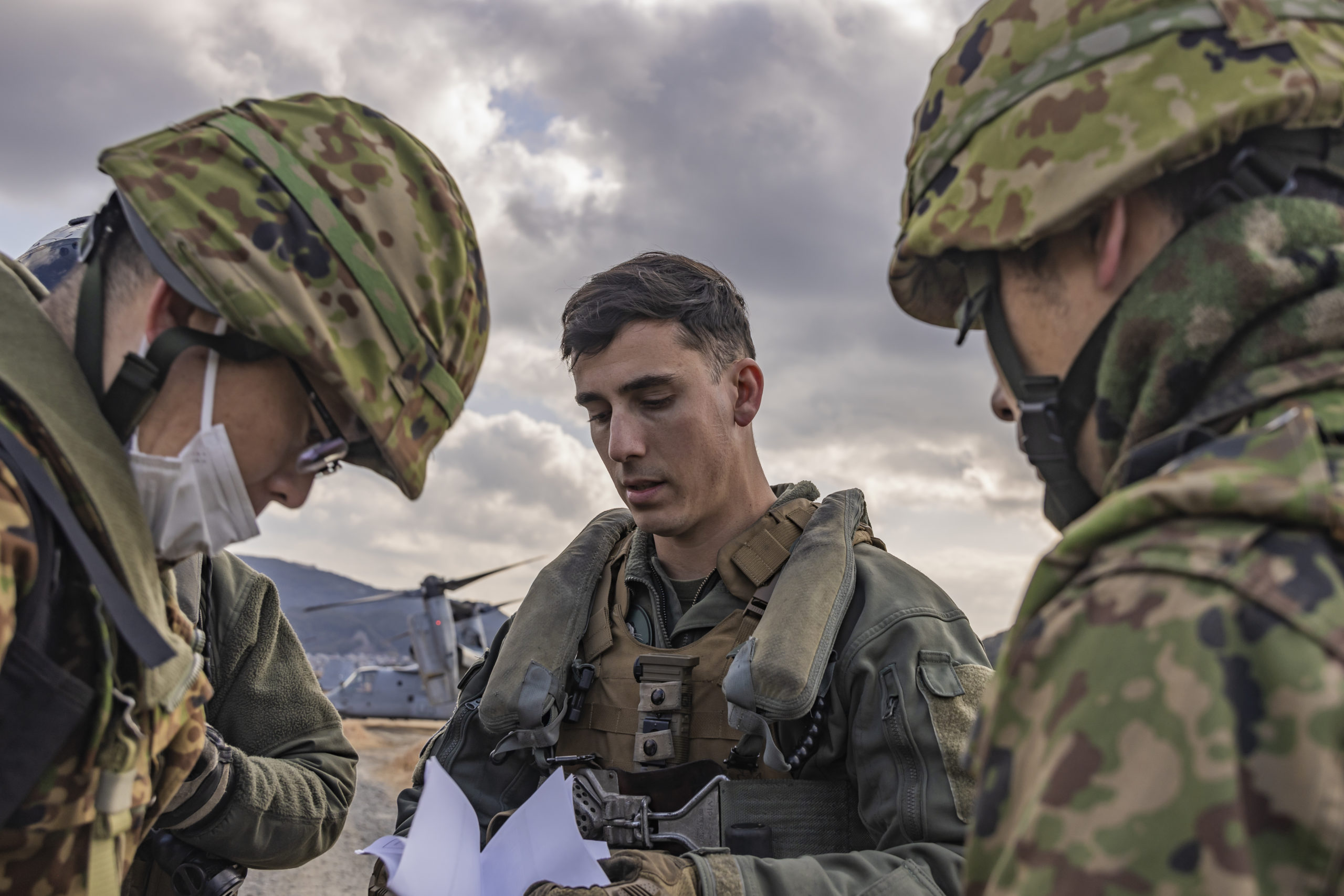
U.S. Marine Corps Staff Sgt. Quentin Kennell, a tiltrotor crew chief, MV-22, with Marine Medium Tiltrotor Squadron (VMM) 262 (Rein.), 31st Marine Expeditionary Unit, center, briefs Japan Ground Self-Defense Force members with 1st Amphibious Rapid Deployment Regiment, prior to embark of U.S. Marine Corps MV-22B Ospreys assigned to VMM-262 (Rein.), during a bilateral insert exercise in support of Iron Fist 25, at JGSDF Camp Ainoura, Sasebo, Nagasaki, Japan, Feb. 23, 2025. Iron Fist is an annual bilateral exercise designed to increase interoperability and strengthen the relationships between the U.S. Marine Corps, U.S. Navy and Japan Ground Self-Defense Force. The 31st MEU, the Marine Corps’ only continuously forward deployed MEU, provides a flexible and lethal force, ready to perform a wide range of military operations as the premiere crisis response force in the Indo-Pacific region. Kennell is a native of California. (U.S. Marine Corps photo by Sgt. Tyler Andrews)
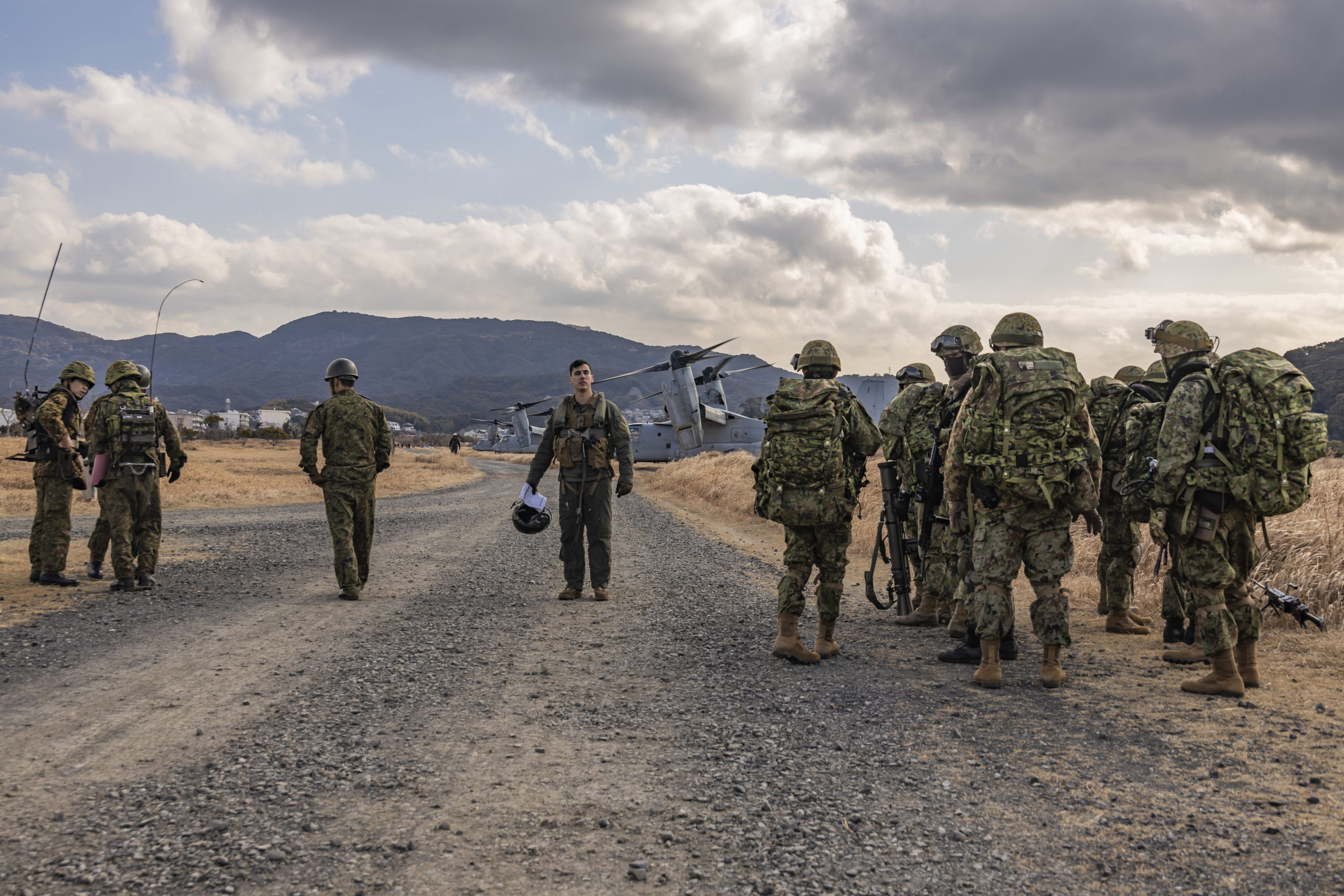
U.S. Marine Corps Staff Sgt. Quentin Kennell, a tiltrotor crew chief, MV-22, with Marine Medium Tiltrotor Squadron (VMM) 262 (Rein.), 31st Marine Expeditionary Unit, center, and Japan Ground Self-Defense Force members with 1st Amphibious Rapid Deployment Regiment, prepare to embark U.S. Marine Corps MV-22B Ospreys assigned to VMM-262 (Rein.), during a bilateral insert exercise in support of Iron Fist 25, at JGSDF Camp Ainoura, Sasebo, Nagasaki, Japan, Feb. 23, 2025. Iron Fist is an annual bilateral exercise designed to increase interoperability and strengthen the relationships between the U.S. Marine Corps, U.S. Navy and Japan Ground Self-Defense Force. The 31st MEU, the Marine Corps’ only continuously forward deployed MEU, provides a flexible and lethal force, ready to perform a wide range of military operations as the premiere crisis response force in the Indo-Pacific region. Kennell is a native of California. (U.S. Marine Corps photo by Sgt. Tyler Andrews)
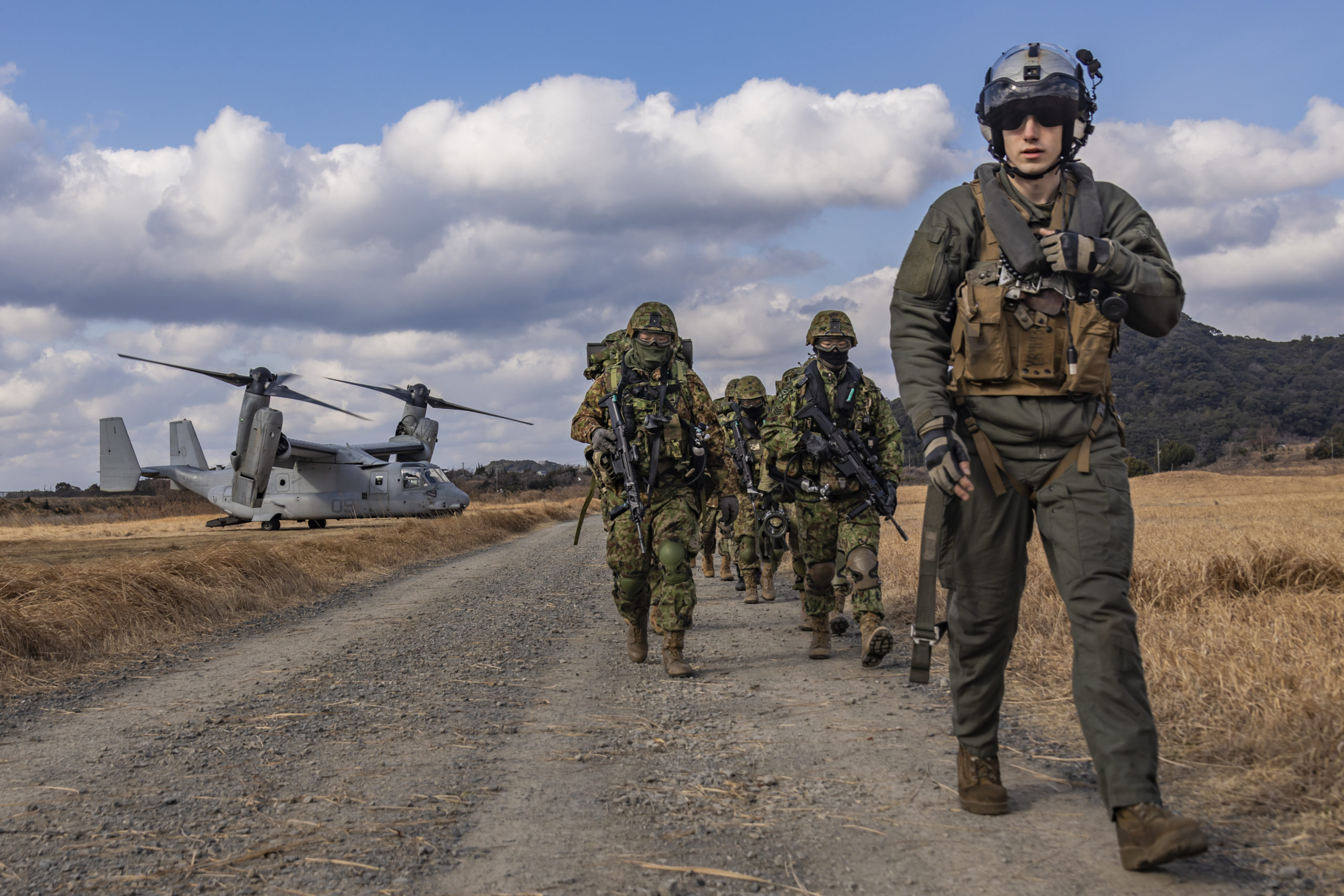
U.S. Marine Corps Staff Sgt. Quentin Kennell, a tiltrotor crew chief, MV-22, with Marine Medium Tiltrotor Squadron (VMM) 262 (Rein.), 31st Marine Expeditionary Unit, right, and Japan Ground Self-Defense Force members with 1st Amphibious Rapid Deployment Regiment, prepare to embark U.S. Marine Corps MV-22B Ospreys assigned to VMM-262 (Rein.), during a bilateral insert exercise in support of Iron Fist 25, at JGSDF Camp Ainoura, Sasebo, Nagasaki, Japan, Feb. 23, 2025. Iron Fist is an annual bilateral exercise designed to increase interoperability and strengthen the relationships between the U.S. Marine Corps, U.S. Navy and Japan Ground Self-Defense Force. The 31st MEU, the Marine Corps’ only continuously forward deployed MEU, provides a flexible and lethal force, ready to perform a wide range of military operations as the premiere crisis response force in the Indo-Pacific region. Kennell is a native of California. (U.S. Marine Corps photo by Sgt. Tyler Andrews)

Japan Ground Self-Defense Force members with 1st Amphibious Rapid Deployment Regiment, embark a U.S. Marine Corps MV-22B Osprey assigned to Marine Medium Tiltrotor Squadron (VMM) 262 (Rein.), 31st Marine Expeditionary Unit, during a bilateral insert exercise in support of Iron Fist 25, at JGSDF Camp Ainoura, Sasebo, Nagasaki, Japan, Feb. 23, 2025. Iron Fist is an annual bilateral exercise designed to increase interoperability and strengthen the relationships between the U.S. Marine Corps, U.S. Navy and Japan Ground Self-Defense Force. The 31st MEU, the Marine Corps’ only continuously forward deployed MEU, provides a flexible and lethal force, ready to perform a wide range of military operations as the premiere crisis response force in the Indo-Pacific region. (U.S. Marine Corps photo by Sgt. Tyler Andrews)

Japan Ground Self-Defense Force members with 1st Amphibious Rapid Deployment Regiment, embark a U.S. Marine Corps MV-22B Osprey assigned to Marine Medium Tiltrotor Squadron (VMM) 262 (Rein.), 31st Marine Expeditionary Unit, during a bilateral insert exercise in support of Iron Fist 25, at JGSDF Camp Ainoura, Sasebo, Nagasaki, Japan, Feb. 23, 2025. Iron Fist is an annual bilateral exercise designed to increase interoperability and strengthen the relationships between the U.S. Marine Corps, U.S. Navy and Japan Ground Self-Defense Force. The 31st MEU, the Marine Corps’ only continuously forward deployed MEU, provides a flexible and lethal force, ready to perform a wide range of military operations as the premiere crisis response force in the Indo-Pacific region. (U.S. Marine Corps photo by Sgt. Tyler Andrews)

U.S. Marines with Marine Medium Tiltrotor Squadron (VMM) 262 (Rein.), 31st Marine Expeditionary Unit, and Japan Ground Self-Defense Force members with 1st Amphibious Rapid Deployment Regiment, takeoff in a U.S. Marine Corps MV-22B Osprey assigned to VMM-262 (Rein.), during a bilateral insert exercise in support of Iron Fist 25, at Japan Ground Self-Defense Force Camp Ainoura, Sasebo, Nagasaki, Japan, Feb. 23, 2025. Iron Fist is an annual bilateral exercise designed to increase interoperability and strengthen the relationships between the U.S. Marine Corps, U.S. Navy and Japan Ground Self-Defense Force. The 31st MEU, the Marine Corps’ only continuously forward deployed MEU, provides a flexible and lethal force, ready to perform a wide range of military operations as the premiere crisis response force in the Indo-Pacific region. (U.S. Marine Corps photo by Sgt. Tyler Andrews)
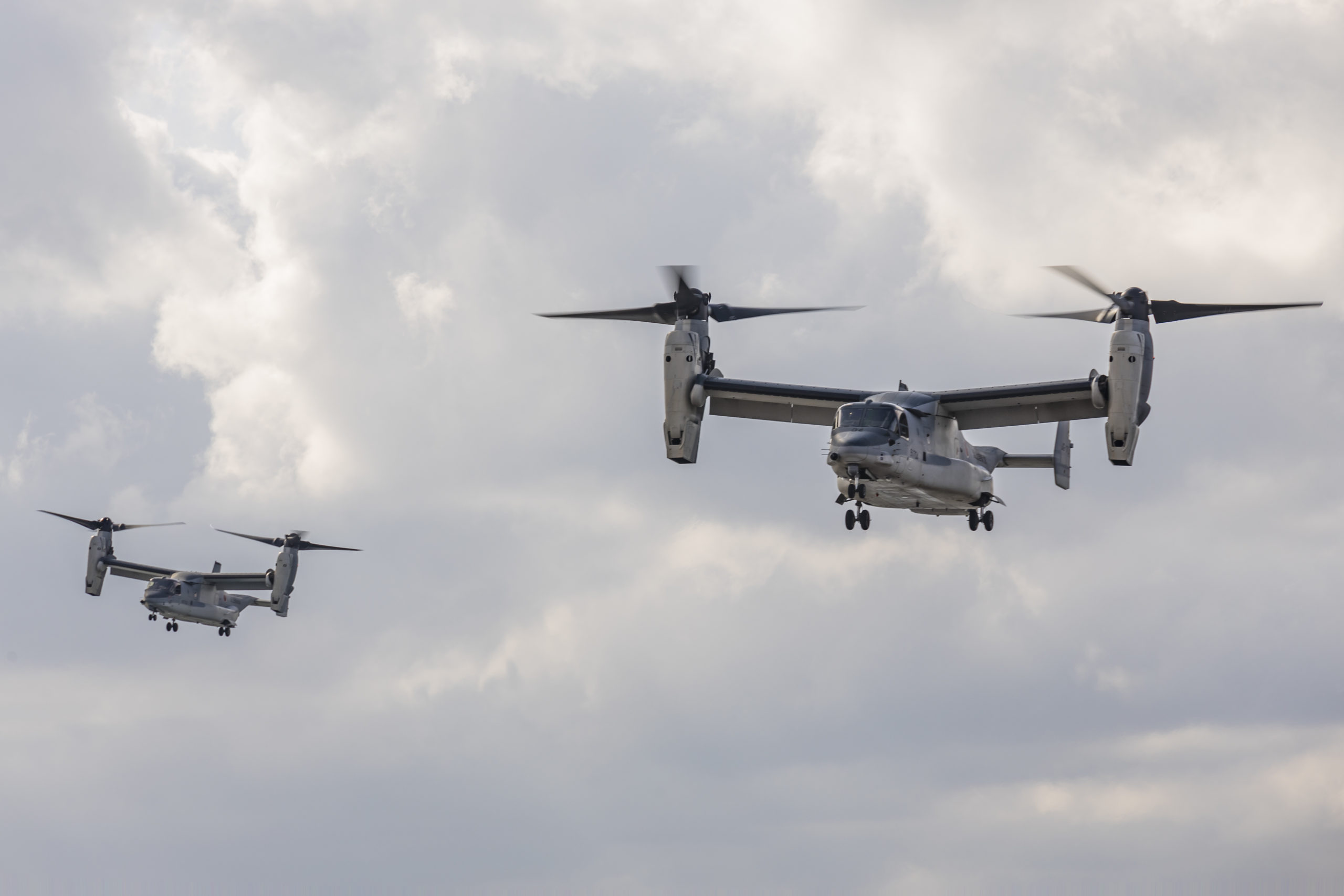
Japan Ground Self-Defense Force members with 1st Amphibious Rapid Deployment Regiment, prepare to land in V-22 Ospreys assigned to 108th Aviation, Transport Aviation Group, during a bilateral insert exercise in support of Iron Fist 25, at JGSDF Camp Ainoura, Sasebo, Nagasaki, Japan, Feb. 23, 2025. Iron Fist is an annual bilateral exercise designed to increase interoperability and strengthen the relationships between the U.S. Marine Corps, U.S. Navy and Japan Ground Self-Defense Force. The 31st MEU, the Marine Corps’ only continuously forward deployed MEU, provides a flexible and lethal force, ready to perform a wide range of military operations as the premiere crisis response force in the Indo-Pacific region. (U.S. Marine Corps photo by Sgt. Tyler Andrews)
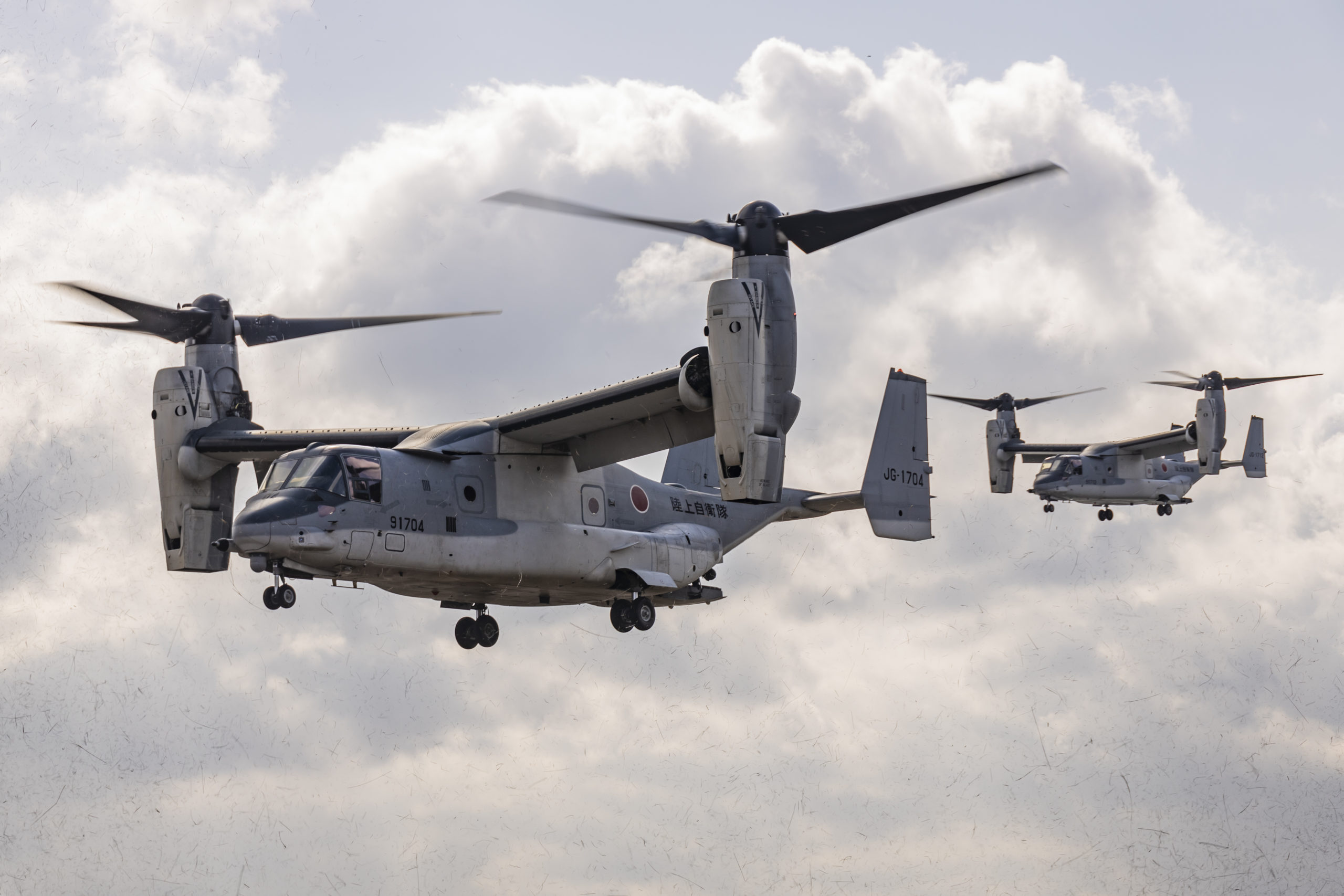
Japan Ground Self-Defense Force members prepare to land in V-22 Ospreys assigned to 108th Aviation, Transport Aviation Group, during a bilateral insert exercise in support of Iron Fist 25, at JGSDF Camp Ainoura, Sasebo, Nagasaki, Japan, Feb. 23, 2025. Iron Fist is an annual bilateral exercise designed to increase interoperability and strengthen the relationships between the U.S. Marine Corps, U.S. Navy and Japan Ground Self-Defense Force. The 31st MEU, the Marine Corps’ only continuously forward deployed MEU, provides a flexible and lethal force, ready to perform a wide range of military operations as the premiere crisis response force in the Indo-Pacific region. (U.S. Marine Corps photo by Sgt. Tyler Andrews)

Japan Ground Self-Defense Force members prepare to land in V-22 Ospreys assigned to 108th Aviation, Transport Aviation Group, during a bilateral insert exercise in support of Iron Fist 25, at JGSDF Camp Ainoura, Sasebo, Nagasaki, Japan, Feb. 23, 2025. Iron Fist is an annual bilateral exercise designed to increase interoperability and strengthen the relationships between the U.S. Marine Corps, U.S. Navy and Japan Ground Self-Defense Force. The 31st MEU, the Marine Corps’ only continuously forward deployed MEU, provides a flexible and lethal force, ready to perform a wide range of military operations as the premiere crisis response force in the Indo-Pacific region. (U.S. Marine Corps photo by Sgt. Tyler Andrews)
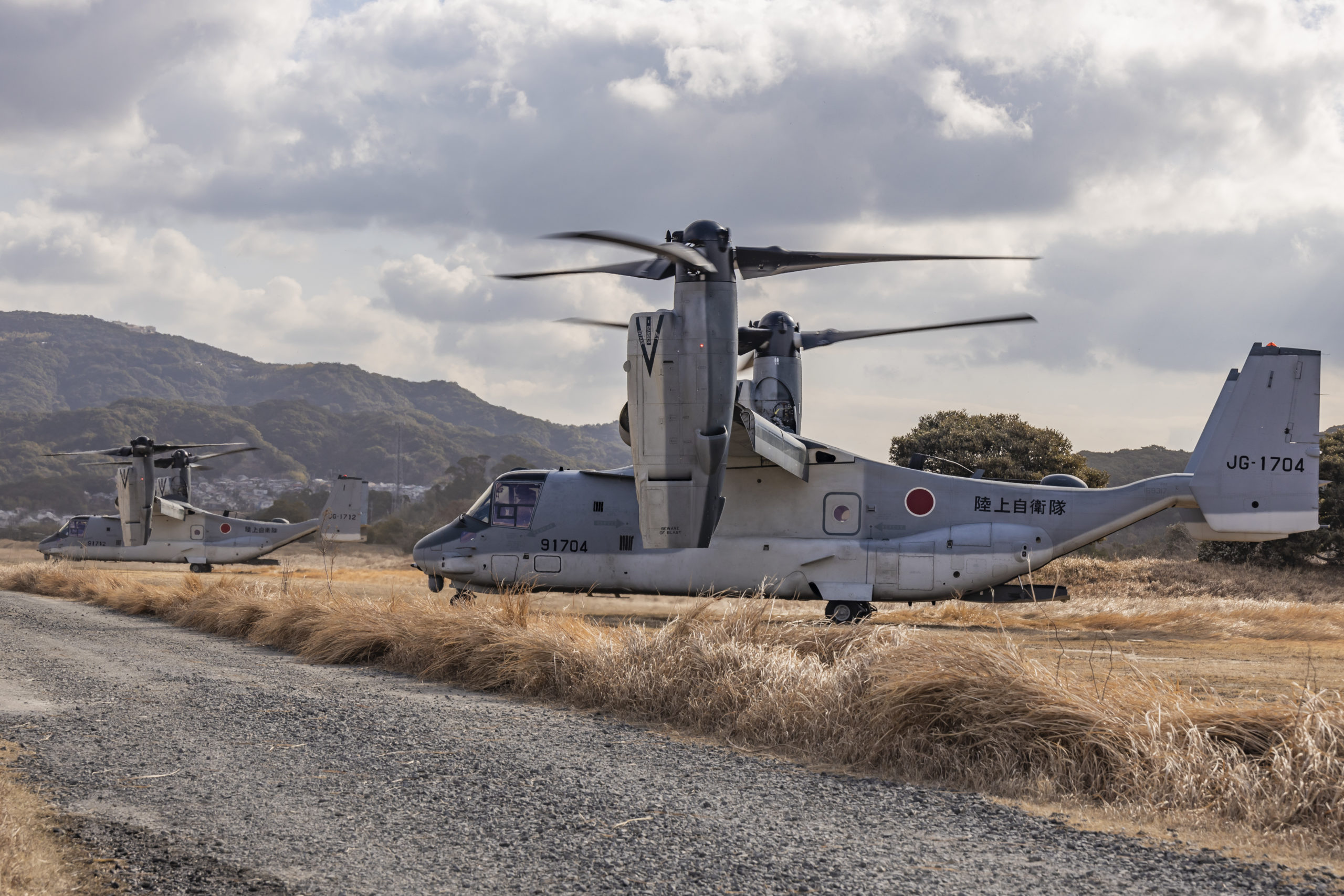
Japan Ground Self-Defense Force members stage V-22 Ospreys assigned to 108th Aviation, Transport Aviation Group, during a bilateral insert exercise in support of Iron Fist 25, at JGSDF Camp Ainoura, Sasebo, Nagasaki, Japan, Feb. 23, 2025. Iron Fist is an annual bilateral exercise designed to increase interoperability and strengthen the relationships between the U.S. Marine Corps, U.S. Navy and Japan Ground Self-Defense Force. The 31st MEU, the Marine Corps’ only continuously forward deployed MEU, provides a flexible and lethal force, ready to perform a wide range of military operations as the premiere crisis response force in the Indo-Pacific region. (U.S. Marine Corps photo by Sgt. Tyler Andrews)
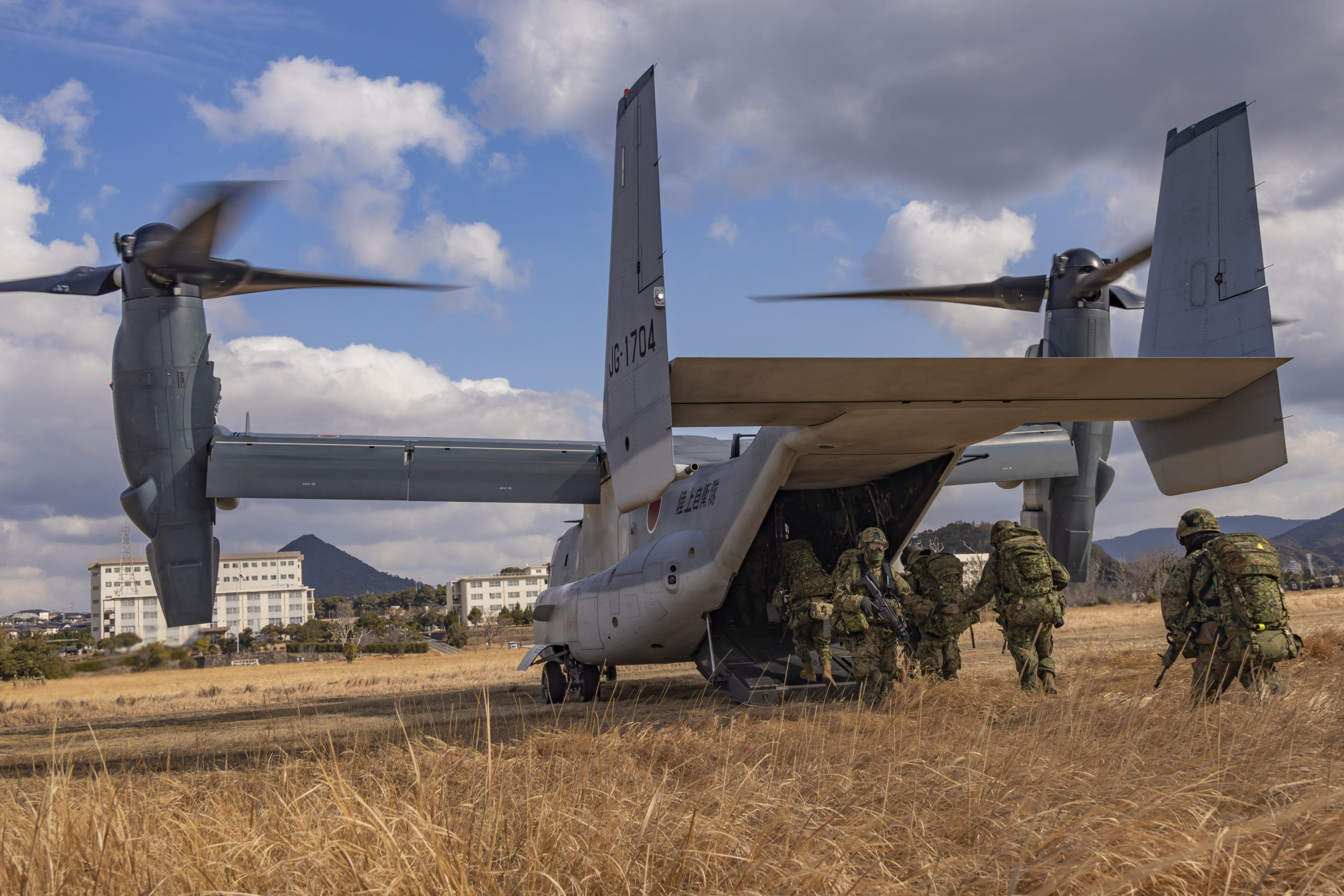
Japan Ground Self-Defense Force members with 1st Amphibious Rapid Deployment Regiment, prepare to embark V-22 Ospreys assigned to 108th Aviation, Transport Aviation Group, during a bilateral insert exercise in support of Iron Fist 25, at JGSDF Camp Ainoura, Sasebo, Nagasaki, Japan, Feb. 23, 2025. Iron Fist is an annual bilateral exercise designed to increase interoperability and strengthen the relationships between the U.S. Marine Corps, U.S. Navy and Japan Ground Self-Defense Force. The 31st MEU, the Marine Corps’ only continuously forward deployed MEU, provides a flexible and lethal force, ready to perform a wide range of military operations as the premiere crisis response force in the Indo-Pacific region. (U.S. Marine Corps photo by Sgt. Tyler Andrews)
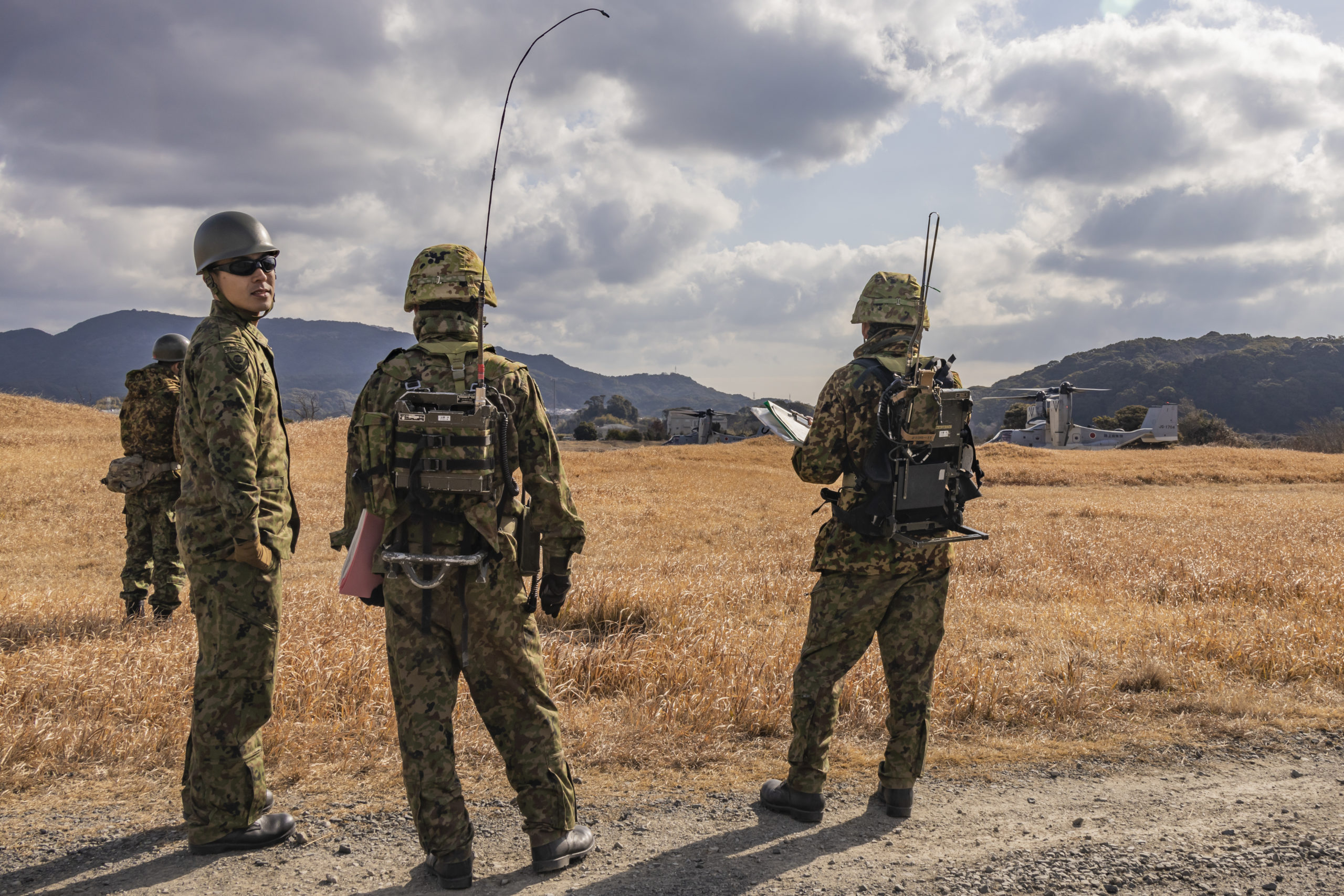
Japan Ground Self-Defense Force members observe the takeoff of V-22 Ospreys assigned to 108th Aviation, Transport Aviation Group, during a bilateral insert exercise in support of Iron Fist 25, at JGSDF Camp Ainoura, Sasebo, Nagasaki, Japan, Feb. 23, 2025. Iron Fist is an annual bilateral exercise designed to increase interoperability and strengthen the relationships between the U.S. Marine Corps, U.S. Navy and Japan Ground Self-Defense Force. The 31st MEU, the Marine Corps’ only continuously forward deployed MEU, provides a flexible and lethal force, ready to perform a wide range of military operations as the premiere crisis response force in the Indo-Pacific region. (U.S. Marine Corps photo by Sgt. Tyler Andrews)
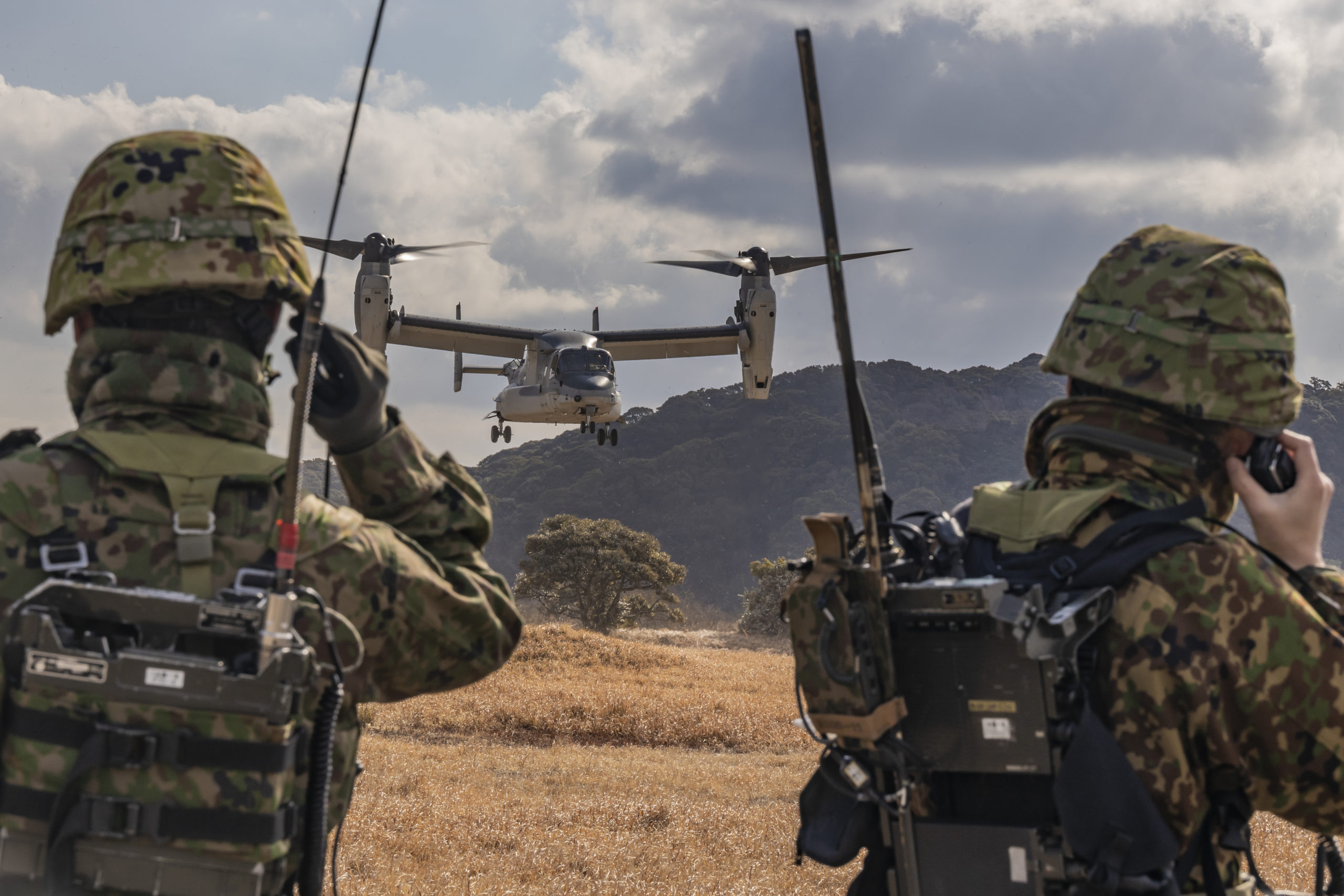
Japan Ground Self-Defense Force members observe the takeoff of V-22 Ospreys assigned to 108th Aviation, Transport Aviation Group, during a bilateral insert exercise in support of Iron Fist 25, at JGSDF Camp Ainoura, Sasebo, Nagasaki, Japan, Feb. 23, 2025. Iron Fist is an annual bilateral exercise designed to increase interoperability and strengthen the relationships between the U.S. Marine Corps, U.S. Navy and Japan Ground Self-Defense Force. The 31st MEU, the Marine Corps’ only continuously forward deployed MEU, provides a flexible and lethal force, ready to perform a wide range of military operations as the premiere crisis response force in the Indo-Pacific region. (U.S. Marine Corps photo by Sgt. Tyler Andrews)
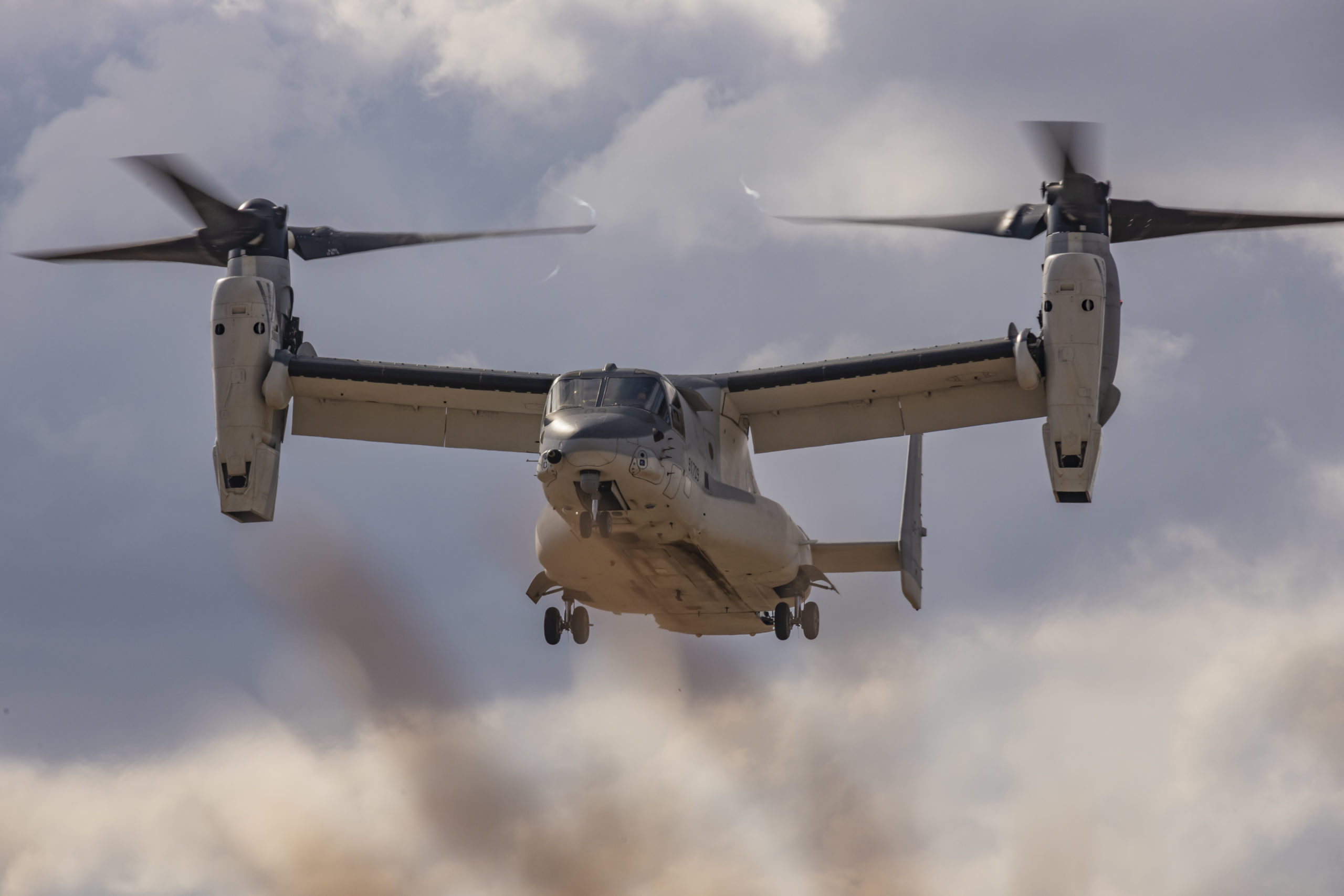
Japan Ground Self-Defense Force members prepare to land in a V-22 Osprey assigned to 108th Aviation, Transport Aviation Group, during a bilateral insert exercise in support of Iron Fist 25, at JGSDF Camp Ainoura, Sasebo, Nagasaki, Japan, Feb. 23, 2025. Iron Fist is an annual bilateral exercise designed to increase interoperability and strengthen the relationships between the U.S. Marine Corps, U.S. Navy and Japan Ground Self-Defense Force. The 31st MEU, the Marine Corps’ only continuously forward deployed MEU, provides a flexible and lethal force, ready to perform a wide range of military operations as the premiere crisis response force in the Indo-Pacific region. (U.S. Marine Corps photo by Sgt. Tyler Andrews)
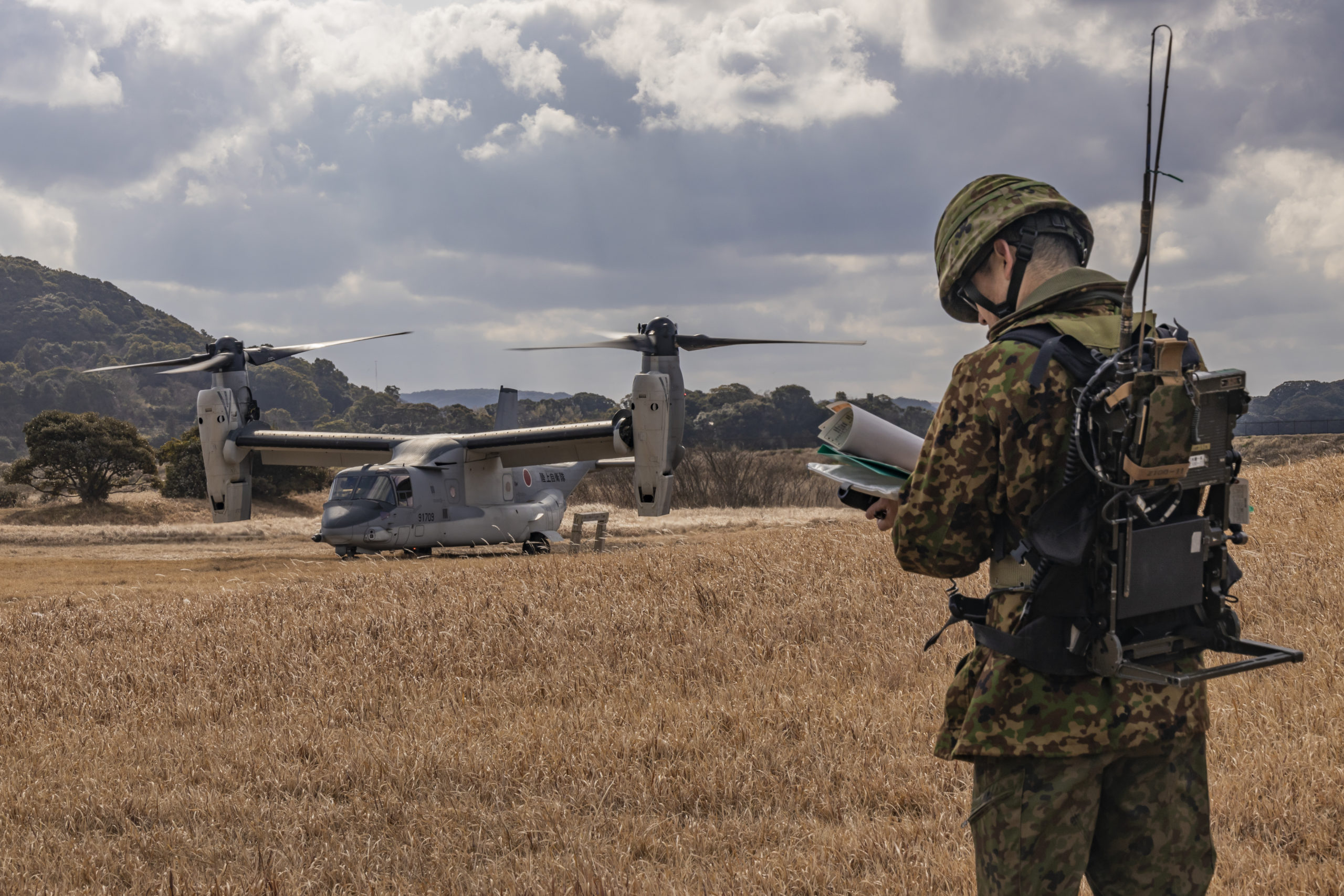
Japan Ground Self-Defense Force members with 108th Aviation, Transport Aviation Group, stage a V-22 Osprey assigned to 108th Aviation, Transport Aviation Group, during a bilateral insert exercise in support of Iron Fist 25, at JGSDF Camp Ainoura, Sasebo, Nagasaki, Japan, Feb. 23, 2025. Iron Fist is an annual bilateral exercise designed to increase interoperability and strengthen the relationships between the U.S. Marine Corps, U.S. Navy and Japan Ground Self-Defense Force. The 31st MEU, the Marine Corps’ only continuously forward deployed MEU, provides a flexible and lethal force, ready to perform a wide range of military operations as the premiere crisis response force in the Indo-Pacific region. (U.S. Marine Corps photo by Sgt. Tyler Andrews)
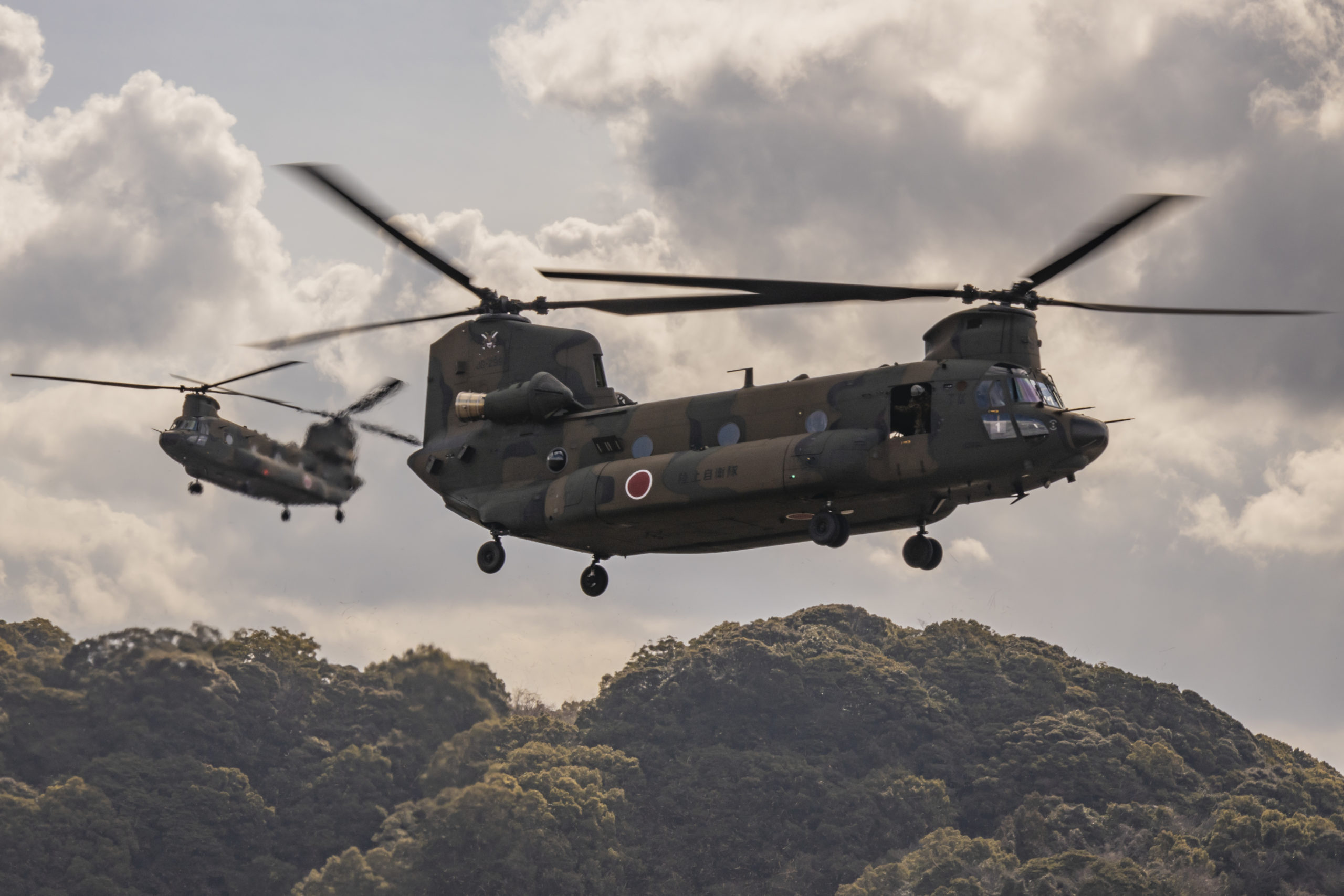
Japan Ground Self-Defense Force members prepare to land in CH-47 Chinook helicopters assigned to 1st Helicopter Brigade, during a bilateral insert exercise in support of Iron Fist 25, at JGSDF Camp Ainoura, Sasebo, Nagasaki, Japan, Feb. 23, 2025. Iron Fist is an annual bilateral exercise designed to increase interoperability and strengthen the relationships between the U.S. Marine Corps, U.S. Navy and Japan Ground Self-Defense Force. The 31st MEU, the Marine Corps’ only continuously forward deployed MEU, provides a flexible and lethal force, ready to perform a wide range of military operations as the premiere crisis response force in the Indo-Pacific region. (U.S. Marine Corps photo by Sgt. Tyler Andrews)
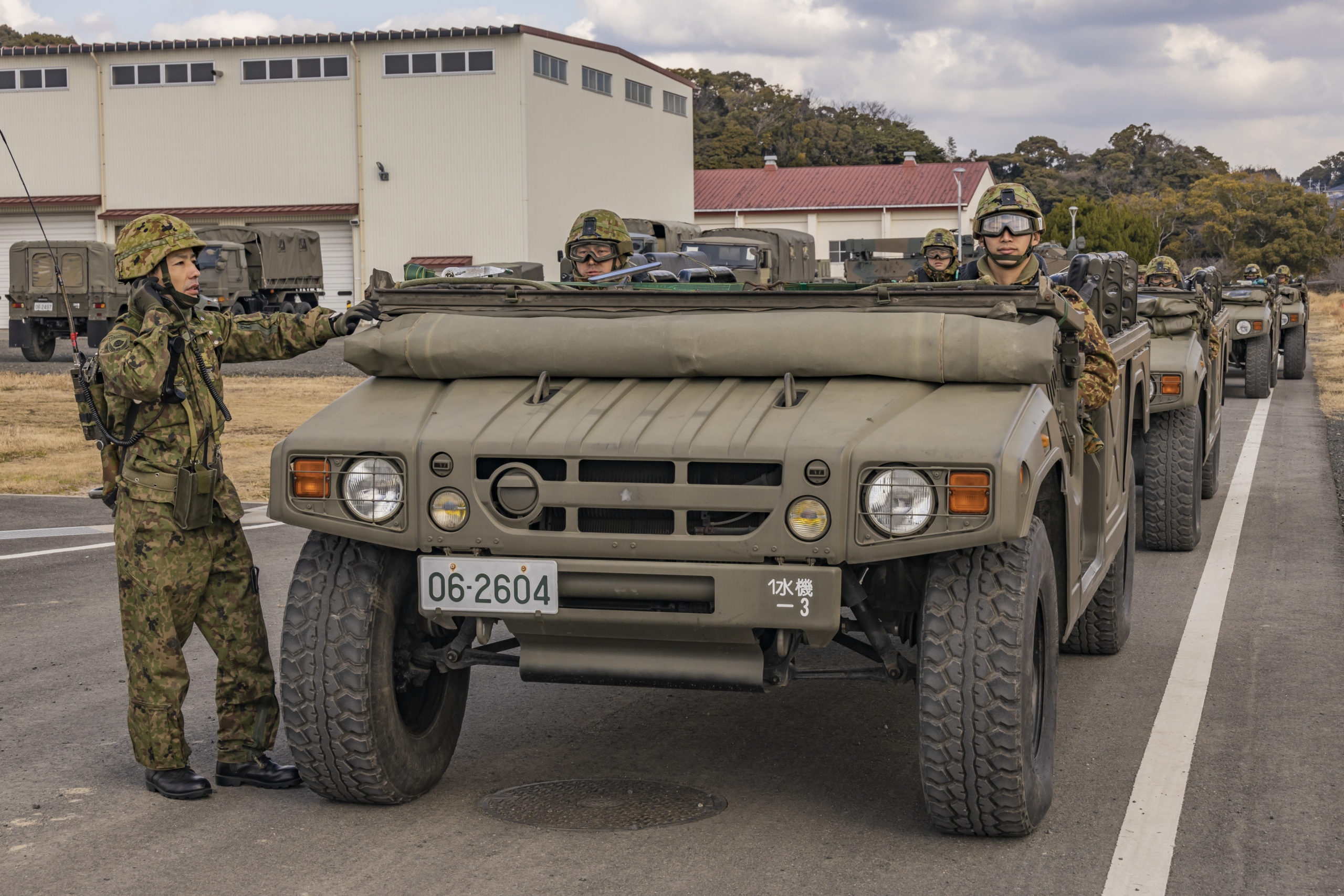
Japan Ground Self-Defense Force members with 1st Amphibious Rapid Deployment Regiment, prepare to embark high mobility multipurpose wheeled vehicles onto CH-47 Chinook helicopters assigned to 1st Helicopter Brigade, during a bilateral insert exercise in support of Iron Fist 25, at JGSDF Camp Ainoura, Sasebo, Nagasaki, Japan, Feb. 23, 2025. Iron Fist is an annual bilateral exercise designed to increase interoperability and strengthen the relationships between the U.S. Marine Corps, U.S. Navy and Japan Ground Self-Defense Force. The 31st MEU, the Marine Corps’ only continuously forward deployed MEU, provides a flexible and lethal force, ready to perform a wide range of military operations as the premiere crisis response force in the Indo-Pacific region. (U.S. Marine Corps photo by Sgt. Tyler Andrews)
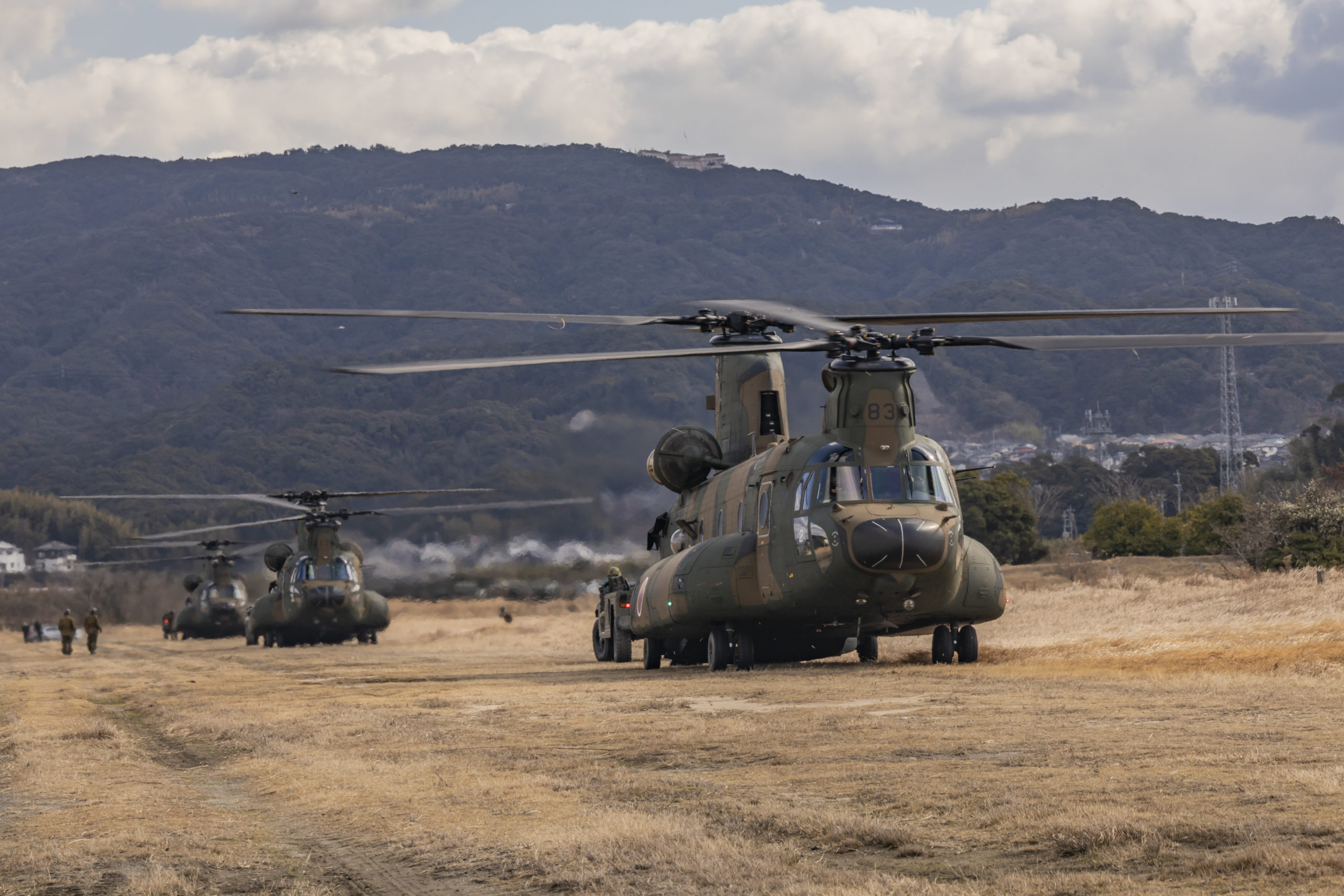
Japan Ground Self-Defense Force members stage CH-47 Chinook helicopters assigned to 1st Helicopter Brigade, during a bilateral insert exercise in support of Iron Fist 25, at JGSDF Camp Ainoura, Sasebo, Nagasaki, Japan, Feb. 23, 2025. Iron Fist is an annual bilateral exercise designed to increase interoperability and strengthen the relationships between the U.S. Marine Corps, U.S. Navy and Japan Ground Self-Defense Force. The 31st MEU, the Marine Corps’ only continuously forward deployed MEU, provides a flexible and lethal force, ready to perform a wide range of military operations as the premiere crisis response force in the Indo-Pacific region. (U.S. Marine Corps photo by Sgt. Tyler Andrews)
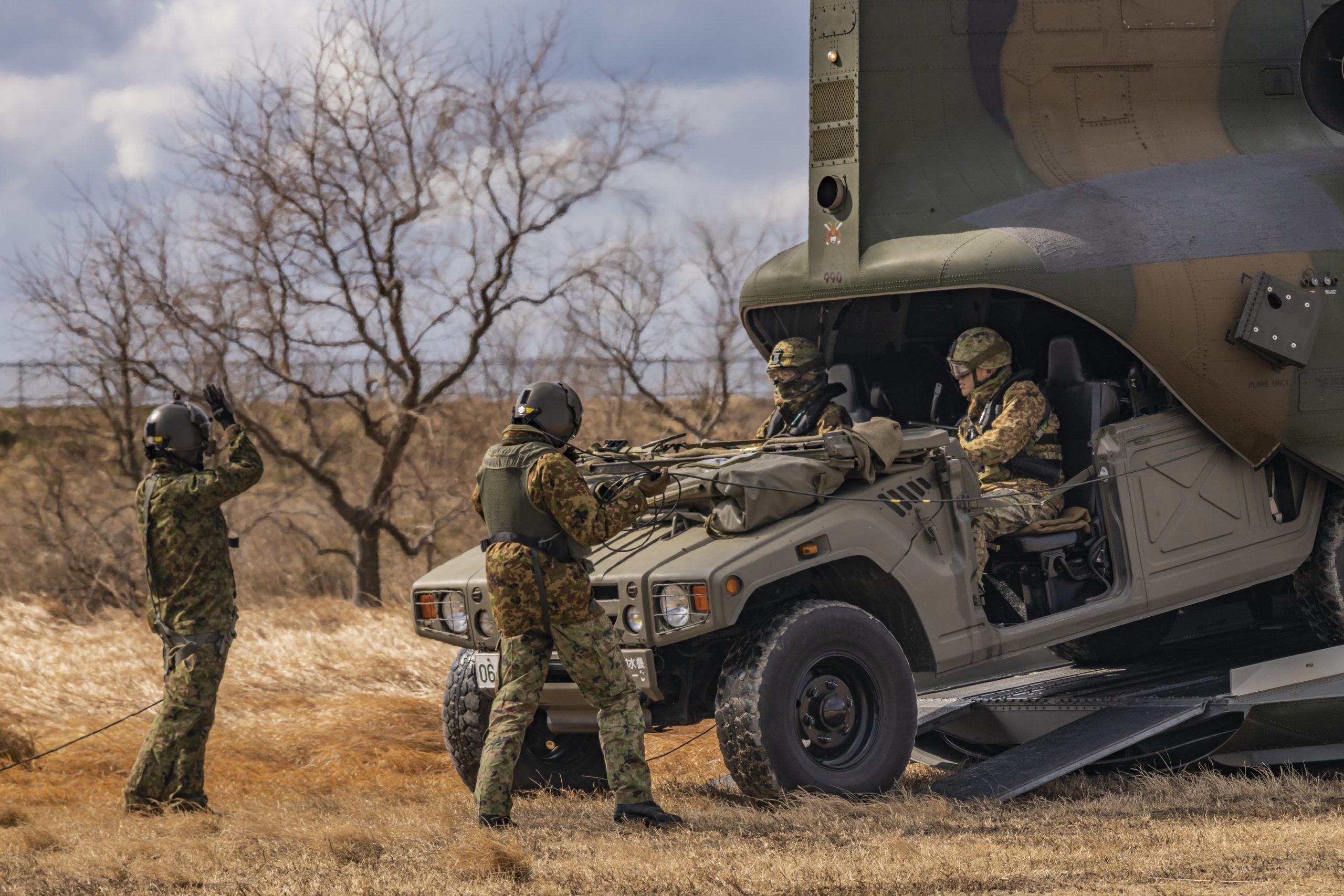
Japan Ground Self-Defense Force members with 1st Amphibious Rapid Deployment Regiment, embark a high mobility multipurpose wheeled vehicle onto a CH-47 Chinook helicopter assigned to 1st Helicopter Brigade, during a bilateral insert exercise in support of Iron Fist 25, at JGSDF Camp Ainoura, Sasebo, Nagasaki, Japan, Feb. 23, 2025. Iron Fist is an annual bilateral exercise designed to increase interoperability and strengthen the relationships between the U.S. Marine Corps, U.S. Navy and Japan Ground Self-Defense Force. The 31st MEU, the Marine Corps’ only continuously forward deployed MEU, provides a flexible and lethal force, ready to perform a wide range of military operations as the premiere crisis response force in the Indo-Pacific region. (U.S. Marine Corps photo by Sgt. Tyler Andrews)
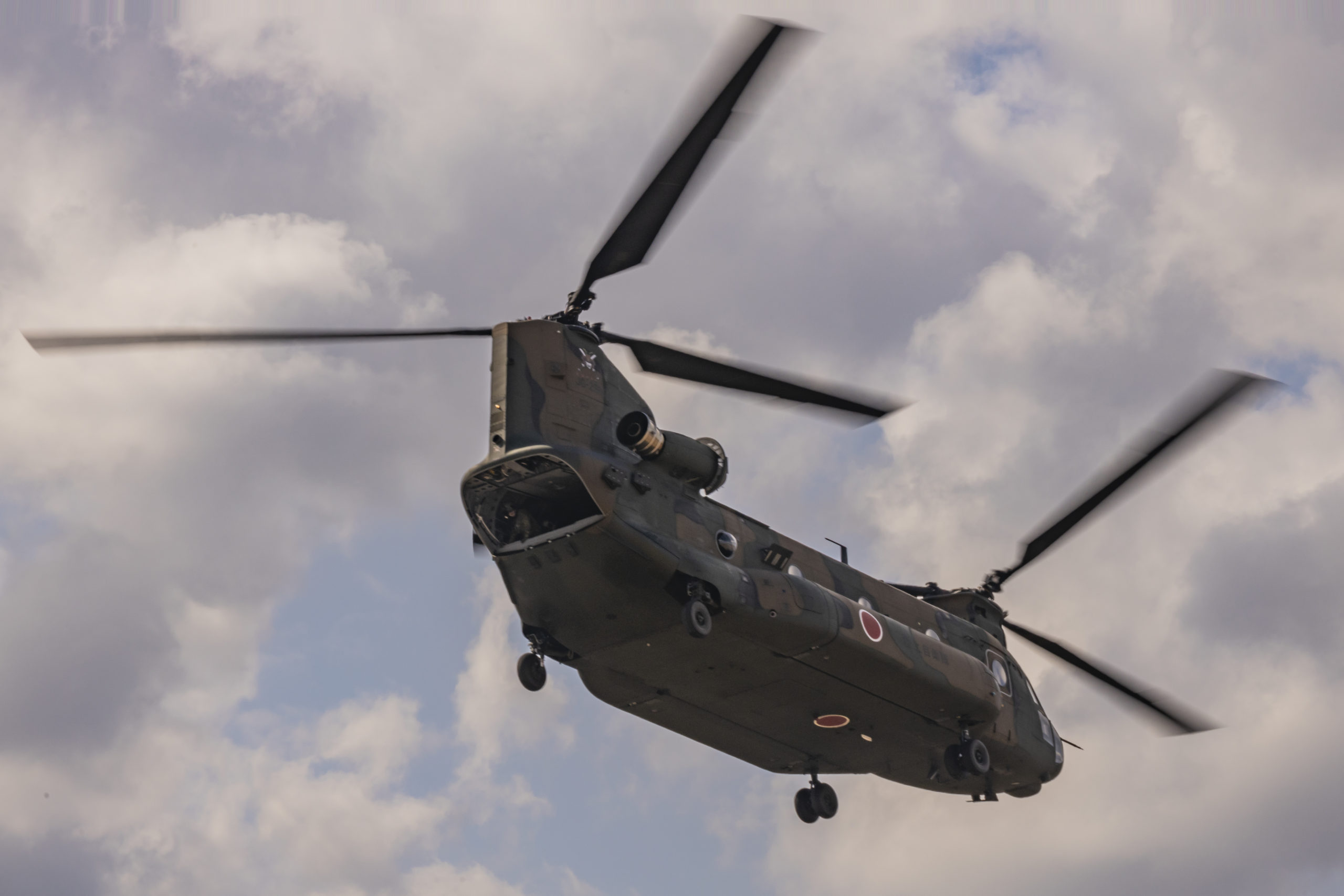
Japan Ground Self-Defense Force members takeoff in a CH-47 Chinook helicopter assigned to 1st Helicopter Brigade, during a bilateral insert exercise in support of Iron Fist 25, at JGSDF Camp Ainoura, Sasebo, Nagasaki, Japan, Feb. 23, 2025. Iron Fist is an annual bilateral exercise designed to increase interoperability and strengthen the relationships between the U.S. Marine Corps, U.S. Navy and Japan Ground Self-Defense Force. The 31st MEU, the Marine Corps’ only continuously forward deployed MEU, provides a flexible and lethal force, ready to perform a wide range of military operations as the premiere crisis response force in the Indo-Pacific region. (U.S. Marine Corps photo by Sgt. Tyler Andrews)
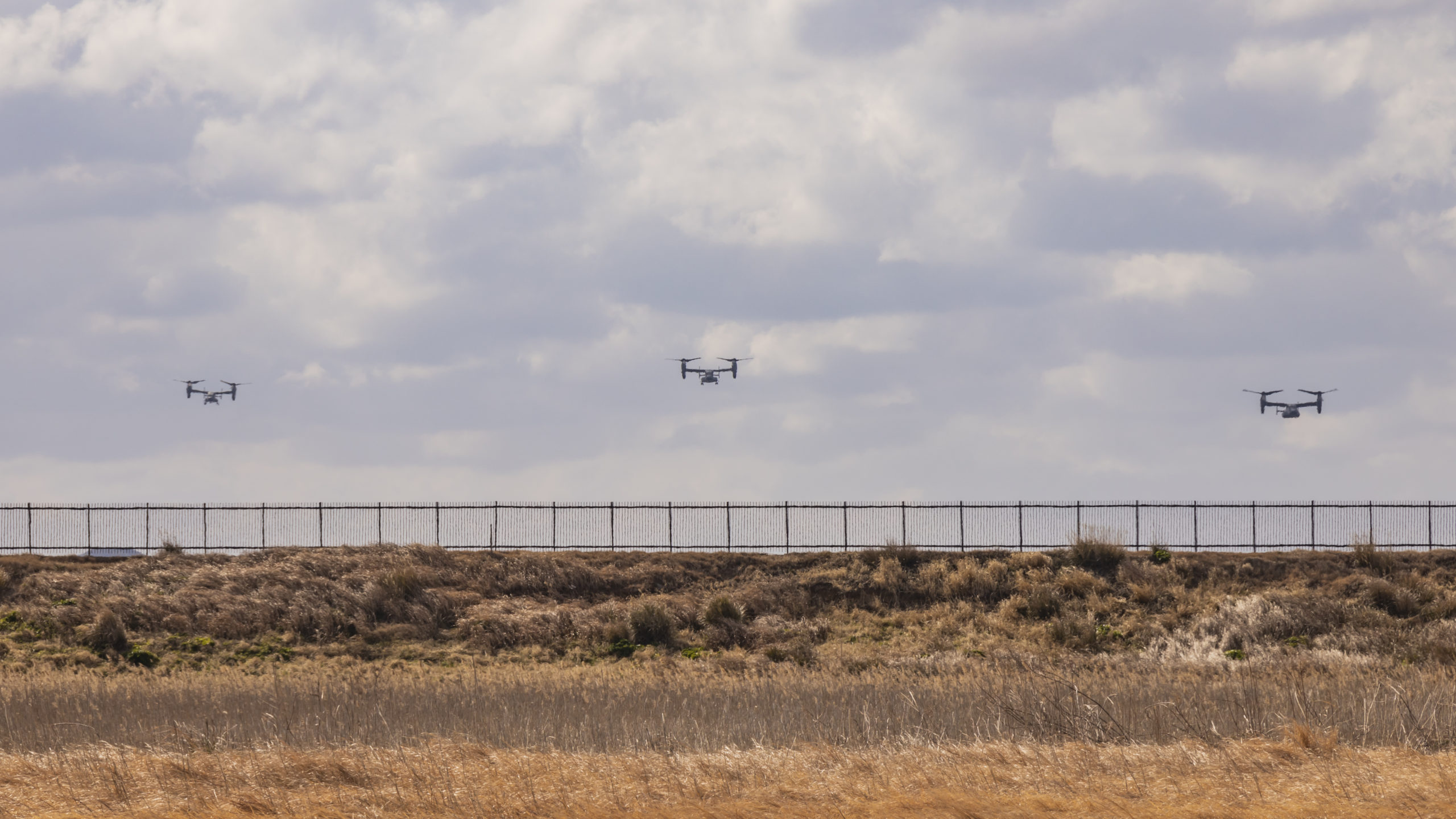
U.S. Marines with Marine Medium Tiltrotor Squadron (VMM) 262 (Rein.), 31st Marine Expeditionary Unit, and Japan Ground Self-Defense Force members with 1st Amphibious Rapid Deployment Regiment, approach a landing zone in U.S. Marine Corps MV-22B Ospreys assigned to VMM-262 (Rein.), during a bilateral insert exercise in support of Iron Fist 25, at JGSDF Camp Ainoura, Sasebo, Nagasaki, Japan, Feb. 23, 2025. Iron Fist is an annual bilateral exercise designed to increase interoperability and strengthen the relationships between the U.S. Marine Corps, U.S. Navy and Japan Ground Self-Defense Force. The 31st MEU, the Marine Corps’ only continuously forward deployed MEU, provides a flexible and lethal force, ready to perform a wide range of military operations as the premiere crisis response force in the Indo-Pacific region. (U.S. Marine Corps photo by Sgt. Tyler Andrews)
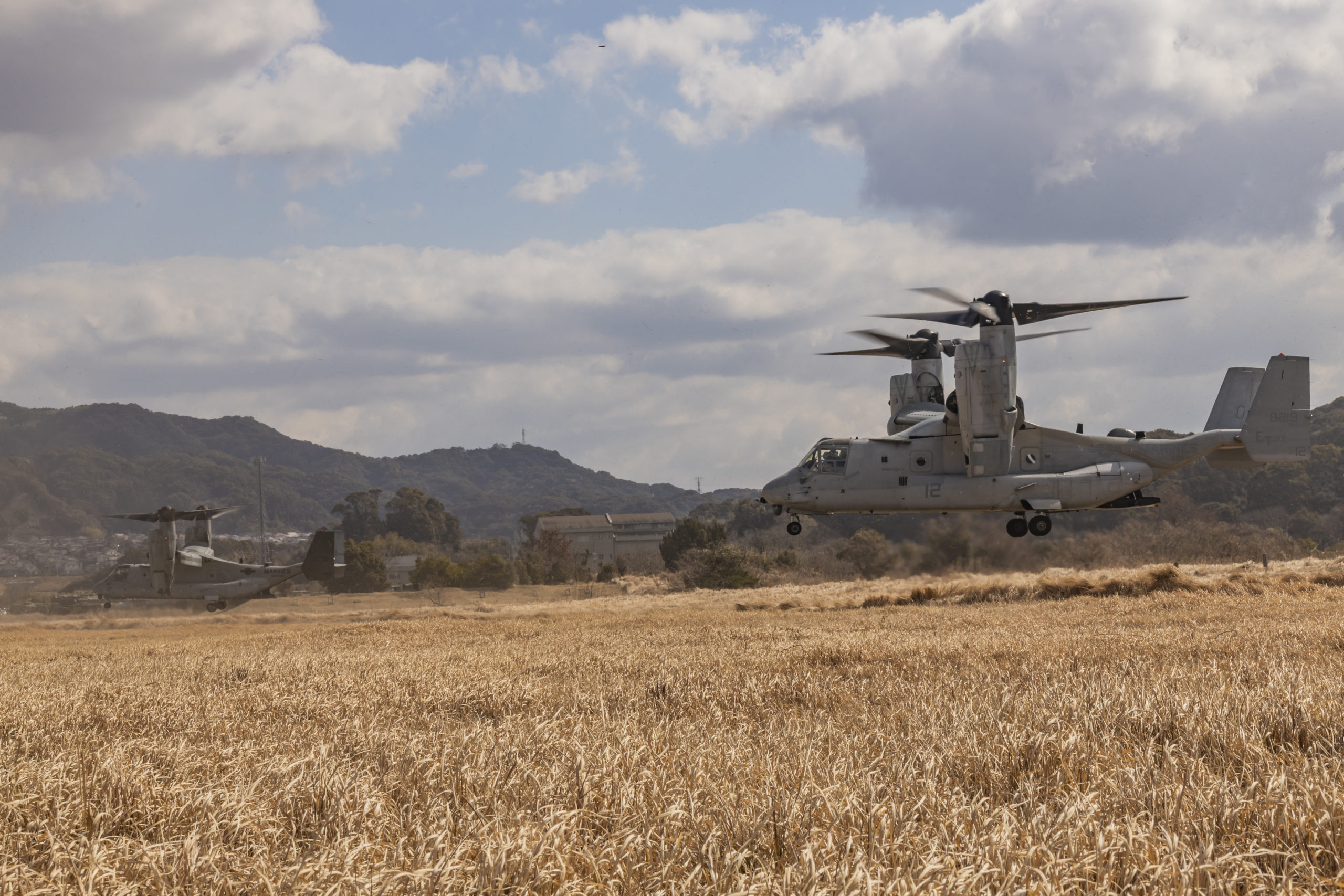
U.S. Marines with Marine Medium Tiltrotor Squadron (VMM) 262 (Rein.), 31st Marine Expeditionary Unit, and Japan Ground Self-Defense Force members with 1st Amphibious Rapid Deployment Regiment, prepare to land U.S. Marine Corps MV-22B Ospreys assigned to VMM-262 (Rein.), during a bilateral insert exercise in support of Iron Fist 25, at JGSDF Camp Ainoura, Sasebo, Nagasaki, Japan, Feb. 23, 2025. Iron Fist is an annual bilateral exercise designed to increase interoperability and strengthen the relationships between the U.S. Marine Corps, U.S. Navy and Japan Ground Self-Defense Force. The 31st MEU, the Marine Corps’ only continuously forward deployed MEU, provides a flexible and lethal force, ready to perform a wide range of military operations as the premiere crisis response force in the Indo-Pacific region. (U.S. Marine Corps photo by Sgt. Tyler Andrews)

Japan Ground Self-Defense Force members with 1st Amphibious Rapid Deployment Regiment, disembark an U.S. Marine Corps MV-22B Osprey assigned to VMM-262 (Rein.), during a bilateral insert exercise in support of Iron Fist 25, at JGSDF Camp Ainoura, Sasebo, Nagasaki, Japan, Feb. 23, 2025. Iron Fist is an annual bilateral exercise designed to increase interoperability and strengthen the relationships between the U.S. Marine Corps, U.S. Navy and Japan Ground Self-Defense Force. The 31st MEU, the Marine Corps’ only continuously forward deployed MEU, provides a flexible and lethal force, ready to perform a wide range of military operations as the premiere crisis response force in the Indo-Pacific region. (U.S. Marine Corps photo by Sgt. Tyler Andrews)
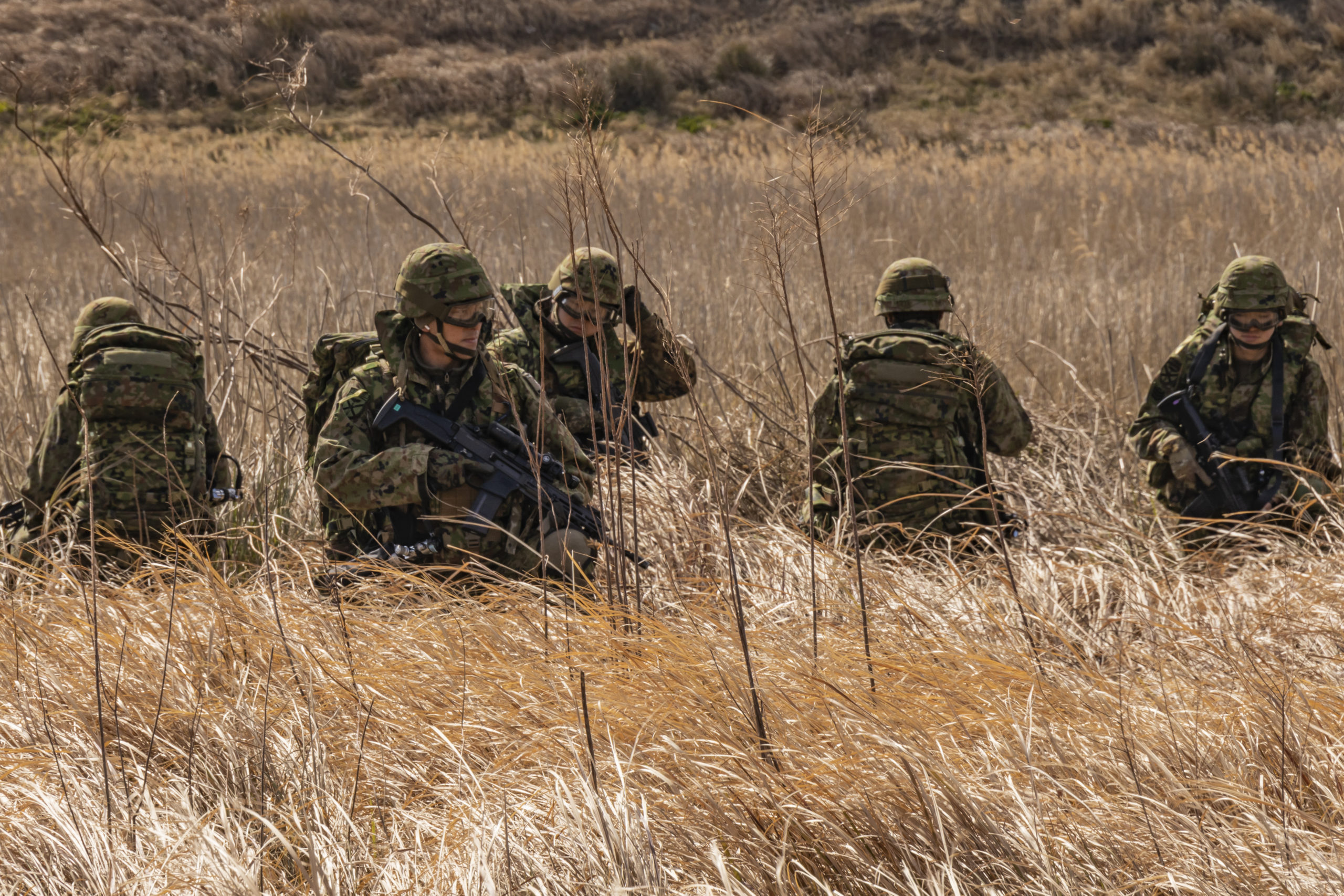
Japan Ground Self-Defense Force members with 1st Amphibious Rapid Deployment Regiment, post security during a bilateral insert exercise in support of Iron Fist 25, at JGSDF Camp Ainoura, Sasebo, Nagasaki, Japan, Feb. 23, 2025. Iron Fist is an annual bilateral exercise designed to increase interoperability and strengthen the relationships between the U.S. Marine Corps, U.S. Navy and Japan Ground Self-Defense Force. The 31st MEU, the Marine Corps’ only continuously forward deployed MEU, provides a flexible and lethal force, ready to perform a wide range of military operations as the premiere crisis response force in the Indo-Pacific region. (U.S. Marine Corps photo by Sgt. Tyler Andrews)
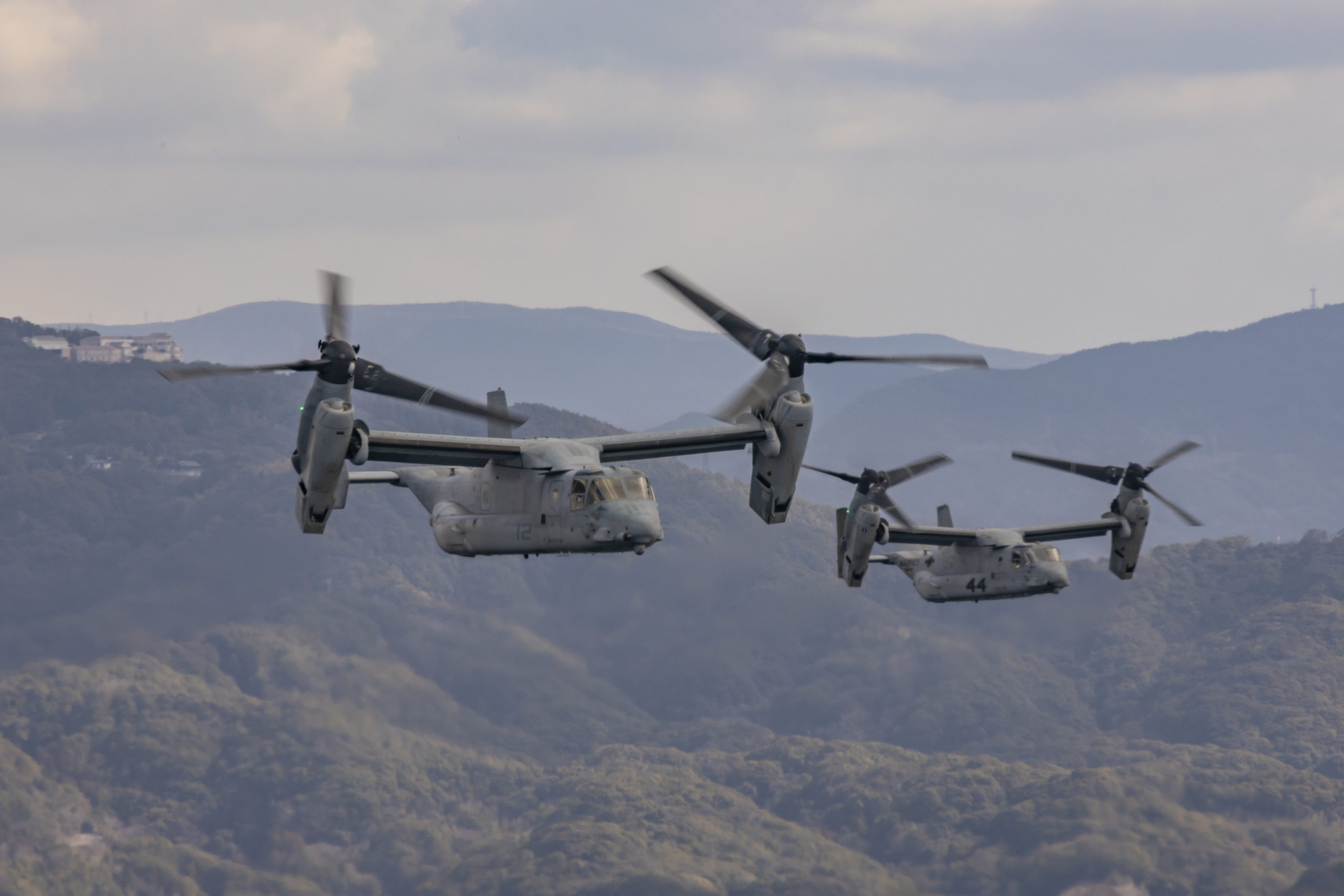
U.S. Marines with Marine Medium Tiltrotor Squadron (VMM) 262 (Rein.), 31st Marine Expeditionary Unit, takeoff in U.S. Marine Corps MV-22B Ospreys assigned to VMM-262 (Rein.), during a bilateral insert exercise in support of Iron Fist 25, above Japan Ground Self-Defense Force Camp Ainoura, Sasebo, Nagasaki, Japan, Feb. 23, 2025. Iron Fist is an annual bilateral exercise designed to increase interoperability and strengthen the relationships between the U.S. Marine Corps, U.S. Navy and Japan Ground Self-Defense Force. The 31st MEU, the Marine Corps’ only continuously forward deployed MEU, provides a flexible and lethal force, ready to perform a wide range of military operations as the premiere crisis response force in the Indo-Pacific region. (U.S. Marine Corps photo by Sgt. Tyler Andrews)
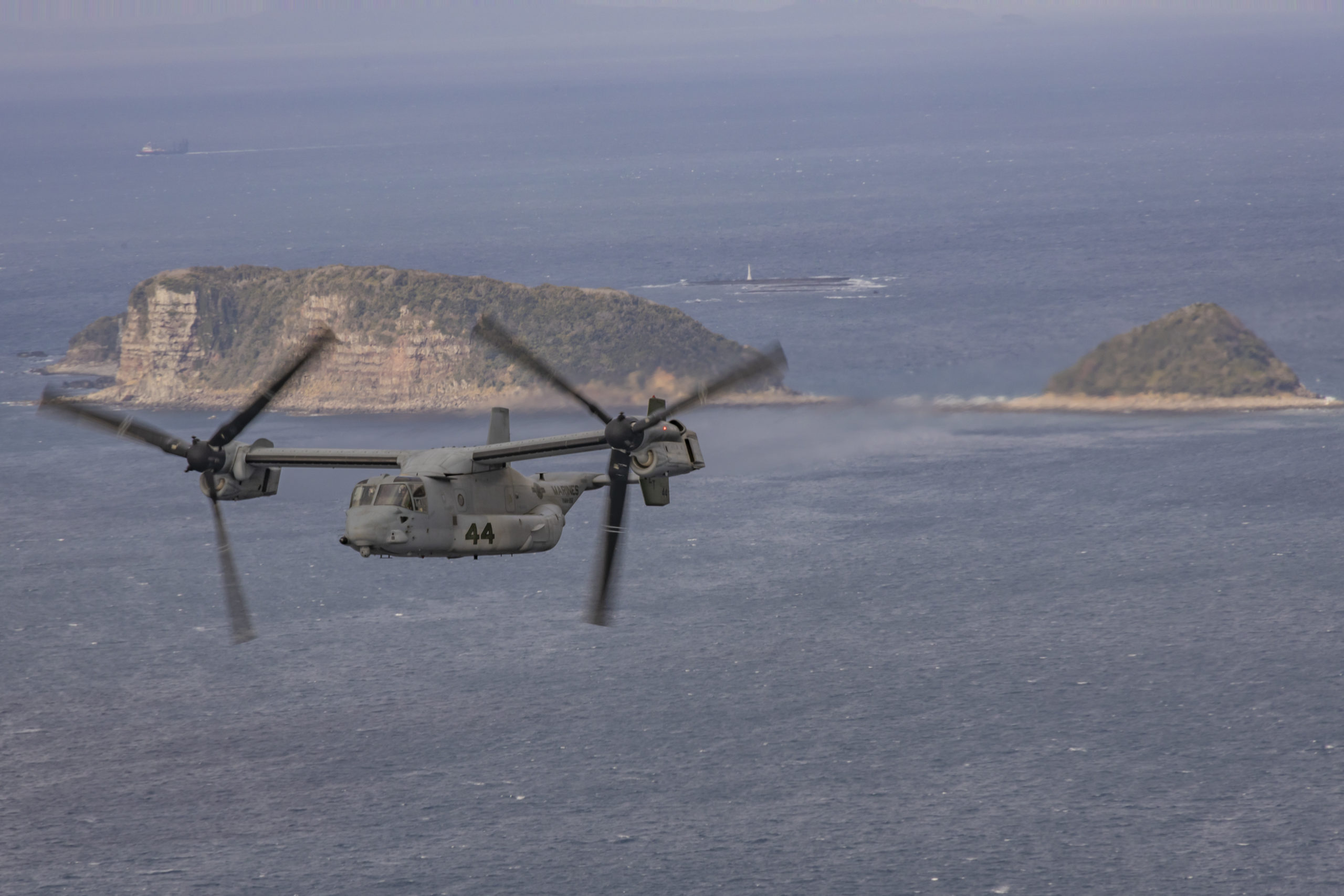
U.S. Marines with Marine Medium Tiltrotor Squadron (VMM) 262 (Rein.), 31st Marine Expeditionary Unit, transport in a U.S. Marine Corps MV-22B Osprey assigned to VMM-262 (Rein.), during a bilateral insert exercise in support of Iron Fist 25, off the coast of Japan, Feb. 23, 2025. Iron Fist is an annual bilateral exercise designed to increase interoperability and strengthen the relationships between the U.S. Marine Corps, U.S. Navy and Japan Ground Self-Defense Force. The 31st MEU, the Marine Corps’ only continuously forward deployed MEU, provides a flexible and lethal force, ready to perform a wide range of military operations as the premiere crisis response force in the Indo-Pacific region. (U.S. Marine Corps photo by Sgt. Tyler Andrews)
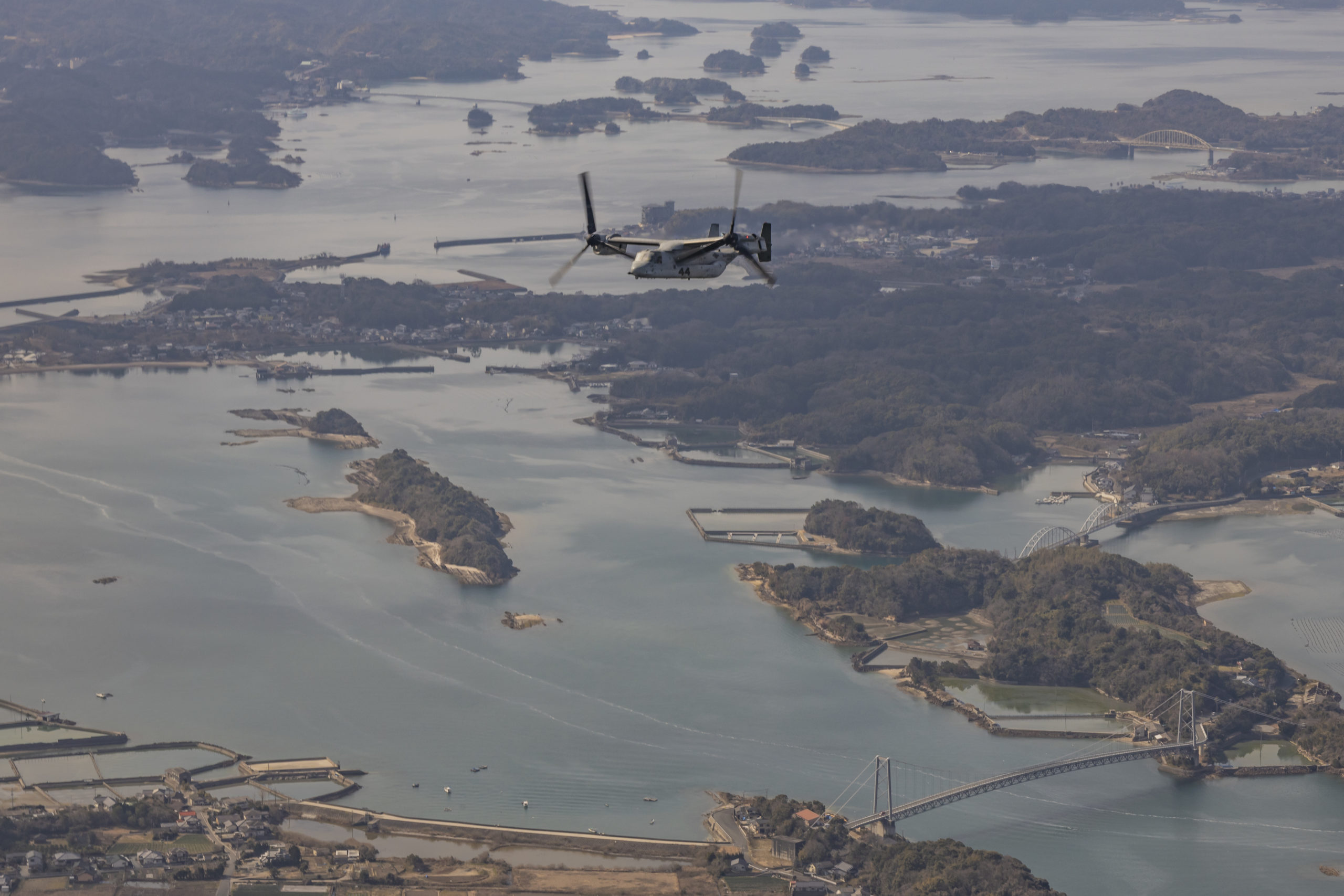
U.S. Marines with Marine Medium Tiltrotor Squadron (VMM) 262 (Rein.), 31st Marine Expeditionary Unit, transport in a U.S. Marine Corps MV-22B Osprey assigned to VMM-262 (Rein.), during a bilateral insert exercise in support of Iron Fist 25, off the coast of Japan, Feb. 23, 2025. Iron Fist is an annual bilateral exercise designed to increase interoperability and strengthen the relationships between the U.S. Marine Corps, U.S. Navy and Japan Ground Self-Defense Force. The 31st MEU, the Marine Corps’ only continuously forward deployed MEU, provides a flexible and lethal force, ready to perform a wide range of military operations as the premiere crisis response force in the Indo-Pacific region. (U.S. Marine Corps photo by Sgt. Tyler Andrews)

Japan Ground Self-Defense Force members prepare to land in V-22 Ospreys assigned to 108th Aviation, Transport Aviation Group, during a bilateral insert exercise in support of Iron Fist 25, at JGSDF Vice-Camp Takayubaru, Kumamoto, Japan, Feb. 23, 2025. Iron Fist is an annual bilateral exercise designed to increase interoperability and strengthen the relationships between the U.S. Marine Corps, U.S. Navy and Japan Ground Self-Defense Force. The 31st MEU, the Marine Corps’ only continuously forward deployed MEU, provides a flexible and lethal force, ready to perform a wide range of military operations as the premiere crisis response force in the Indo-Pacific region. (U.S. Marine Corps photo by Sgt. Tyler Andrews)


